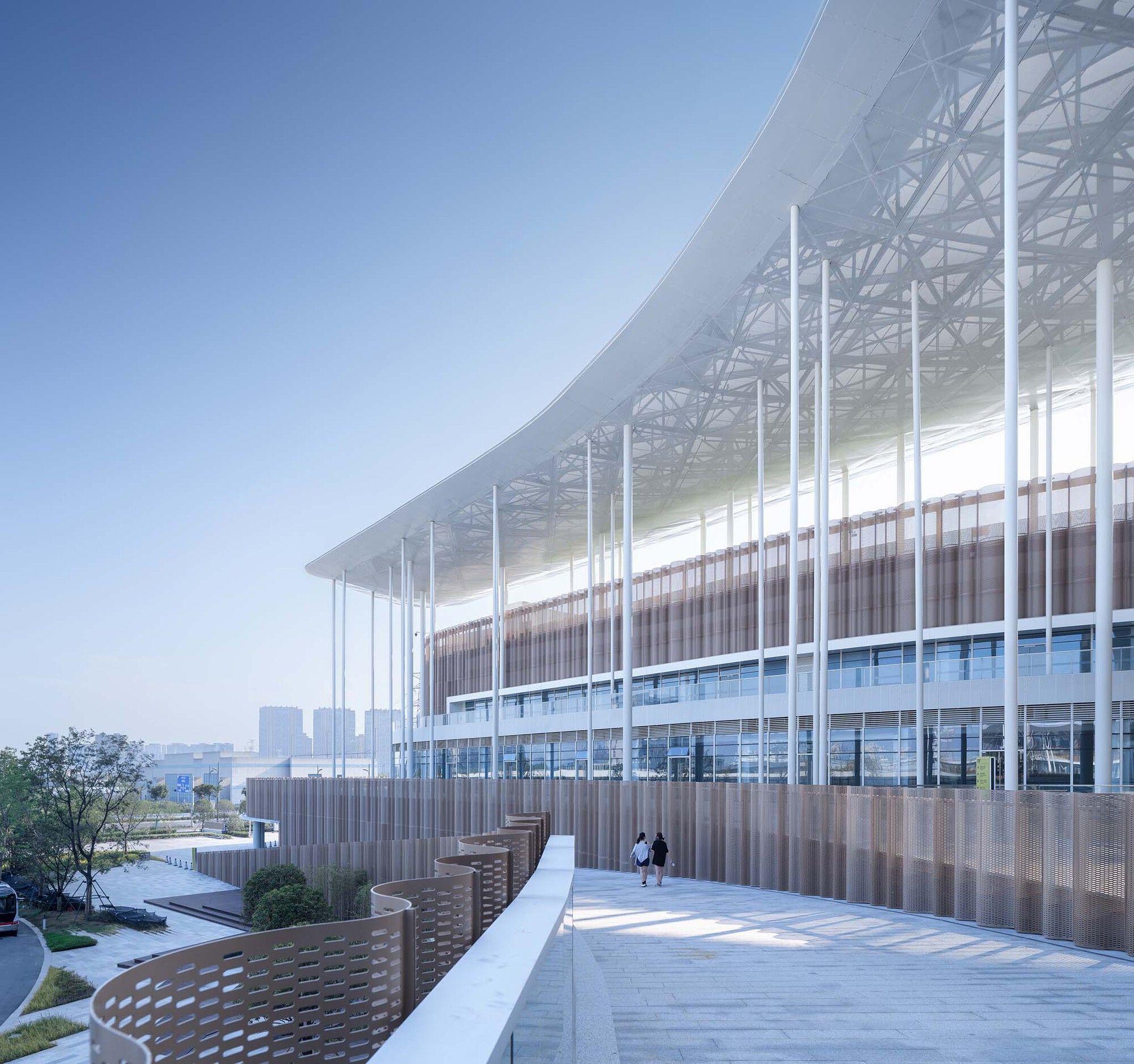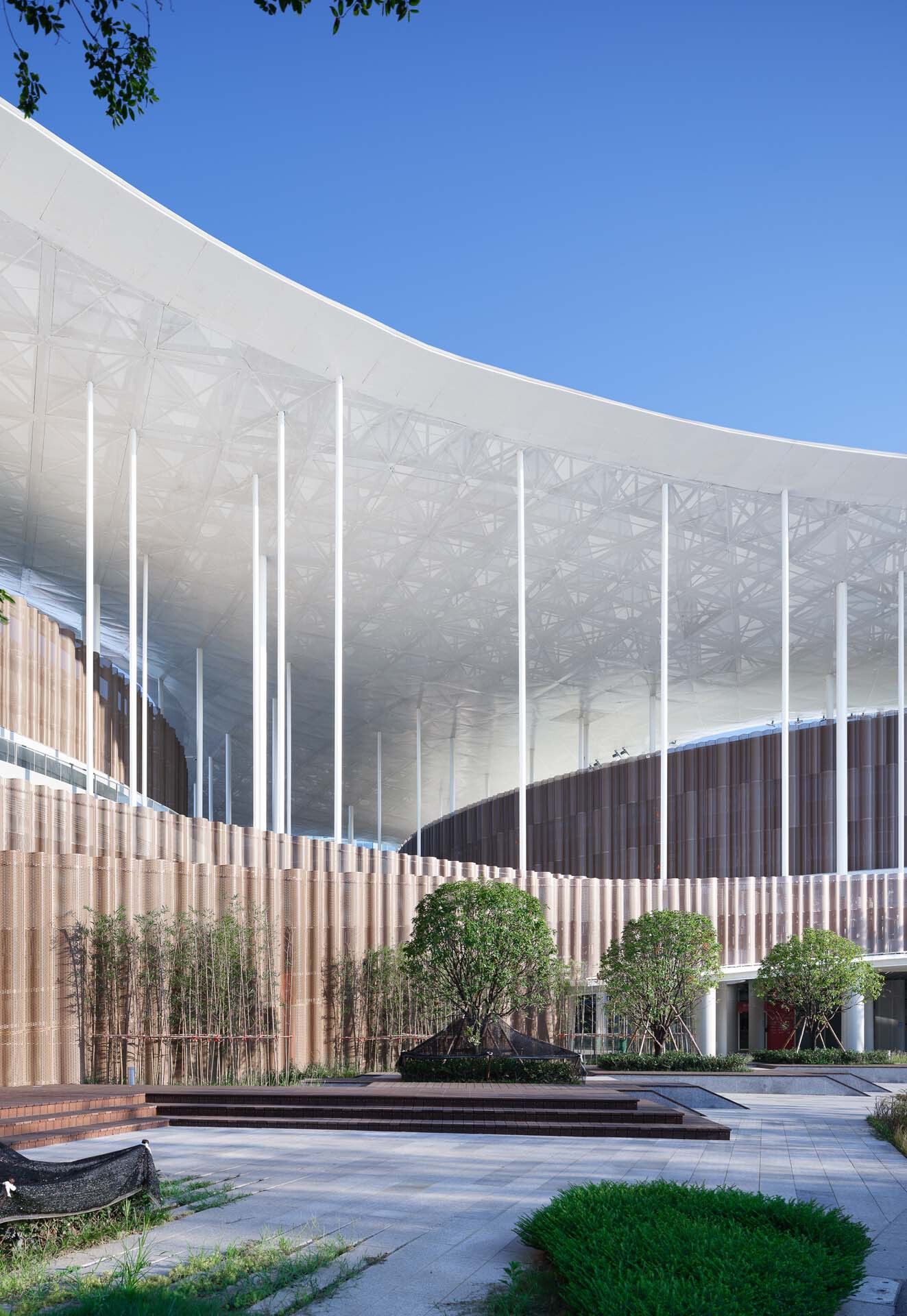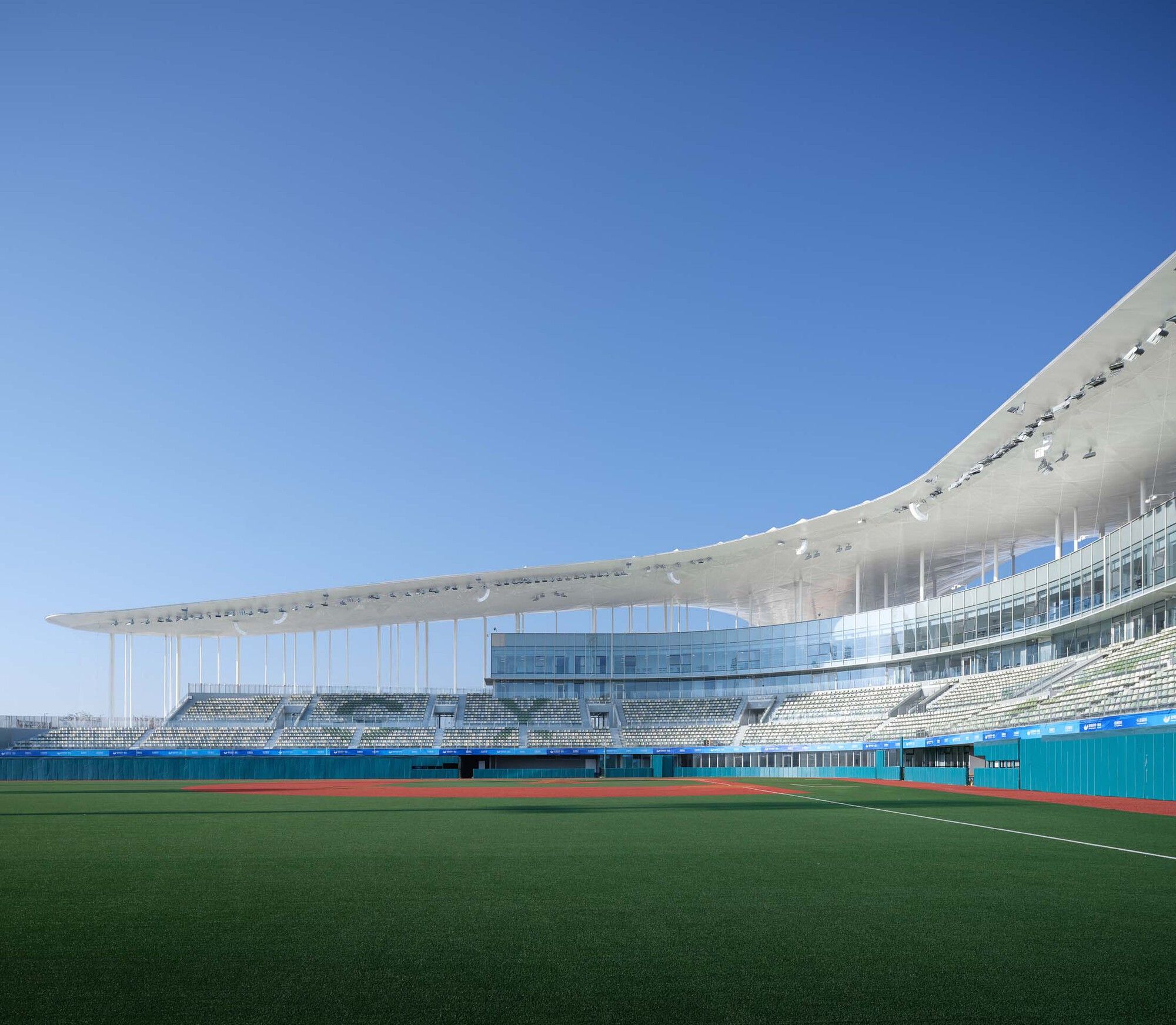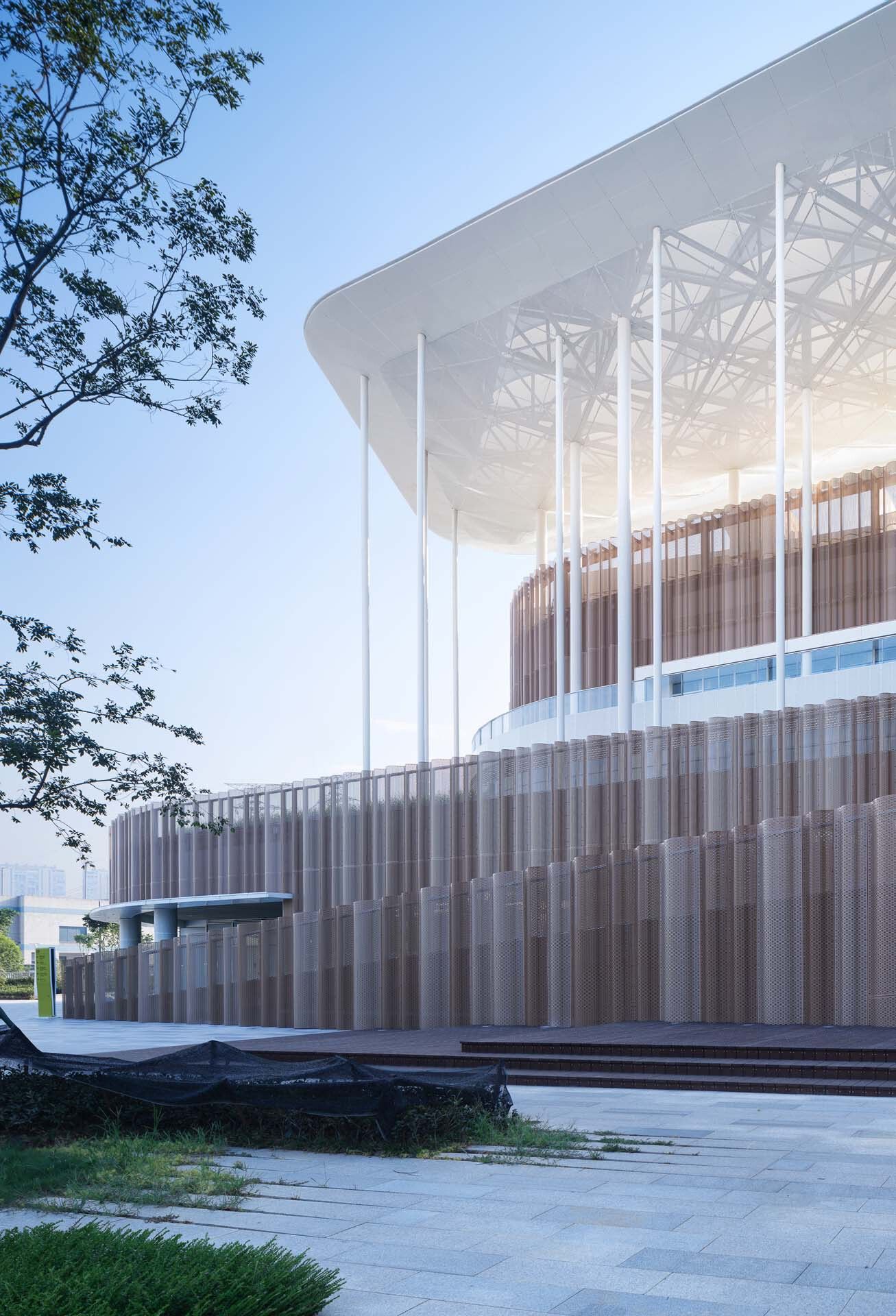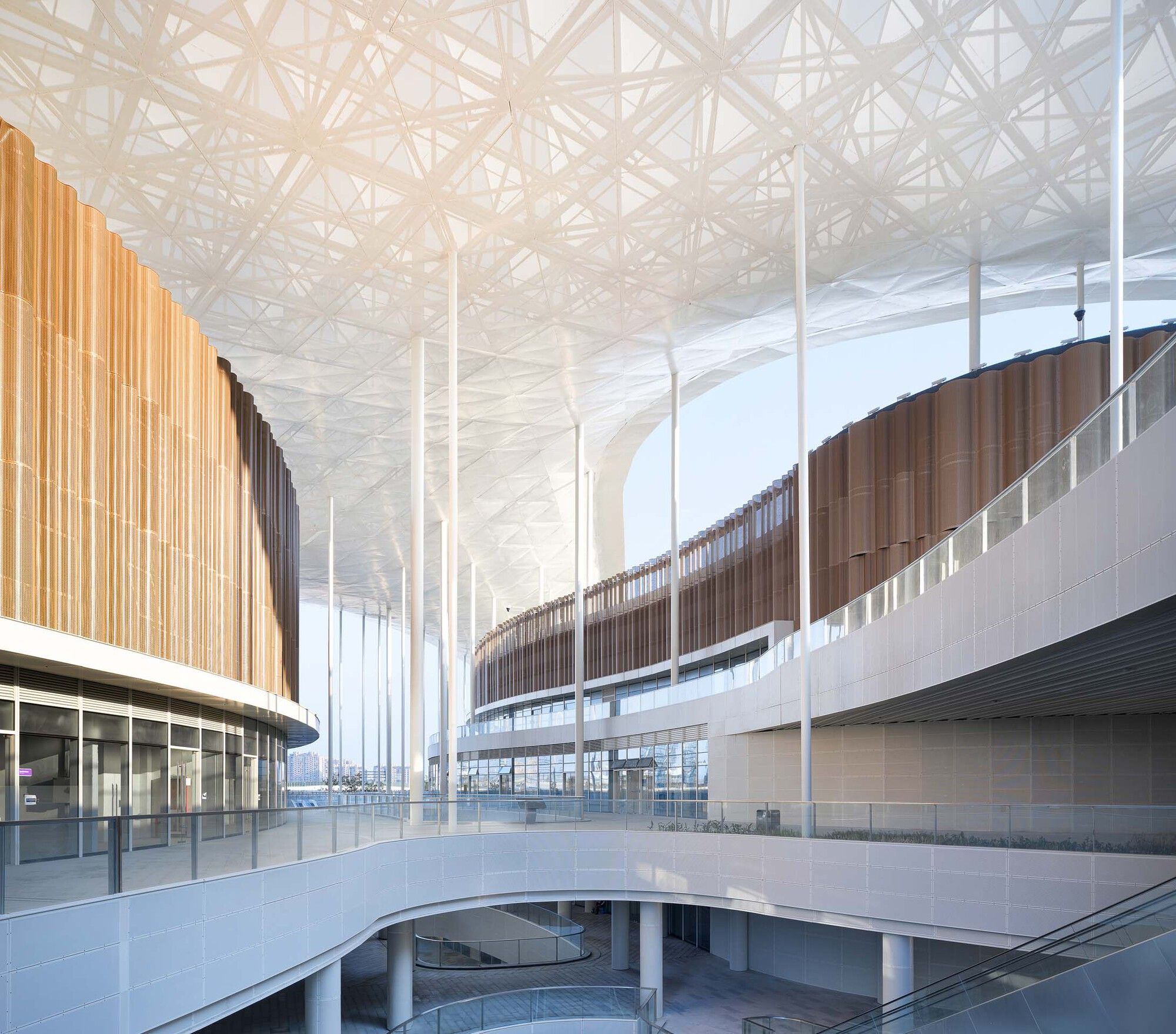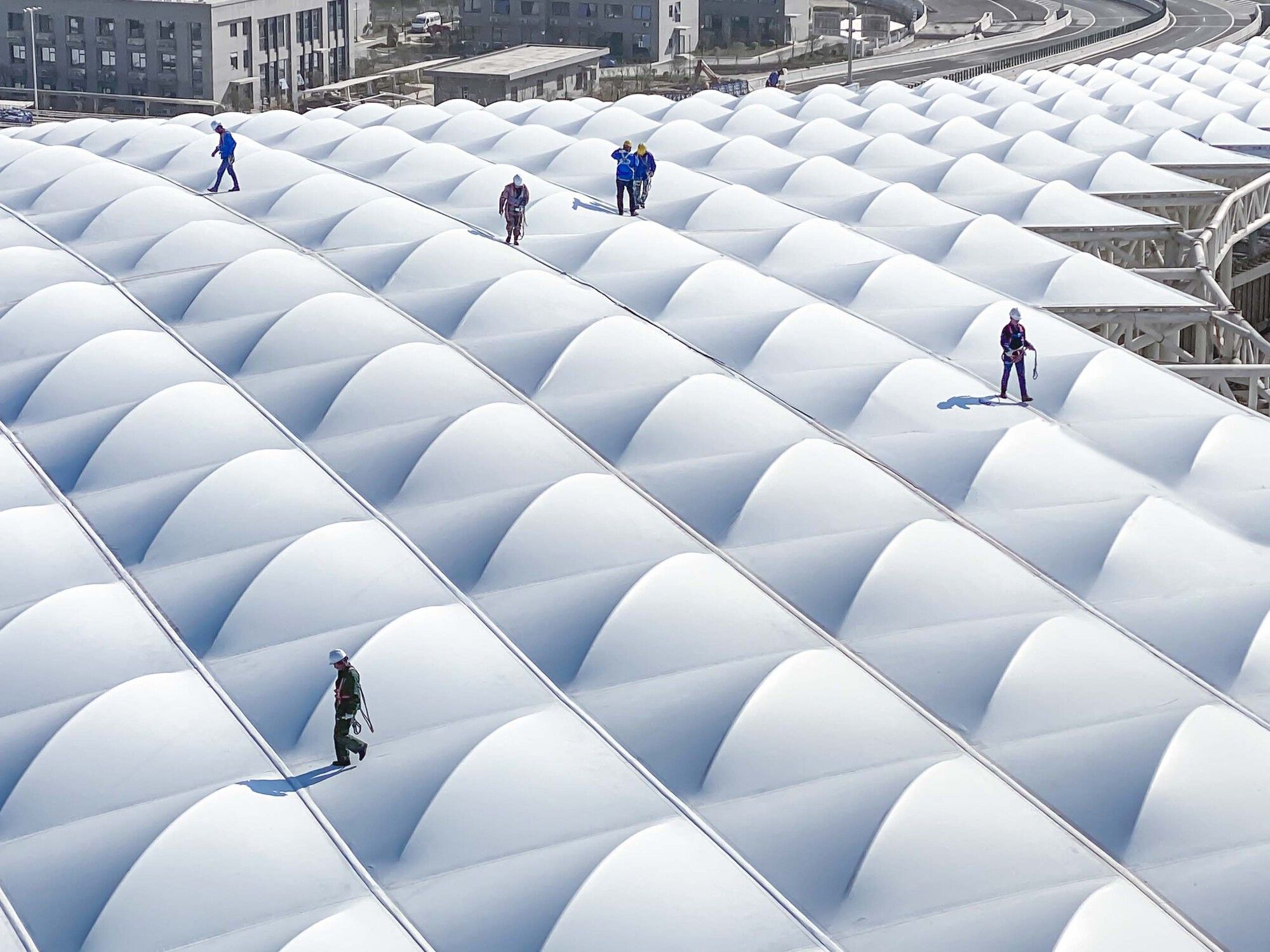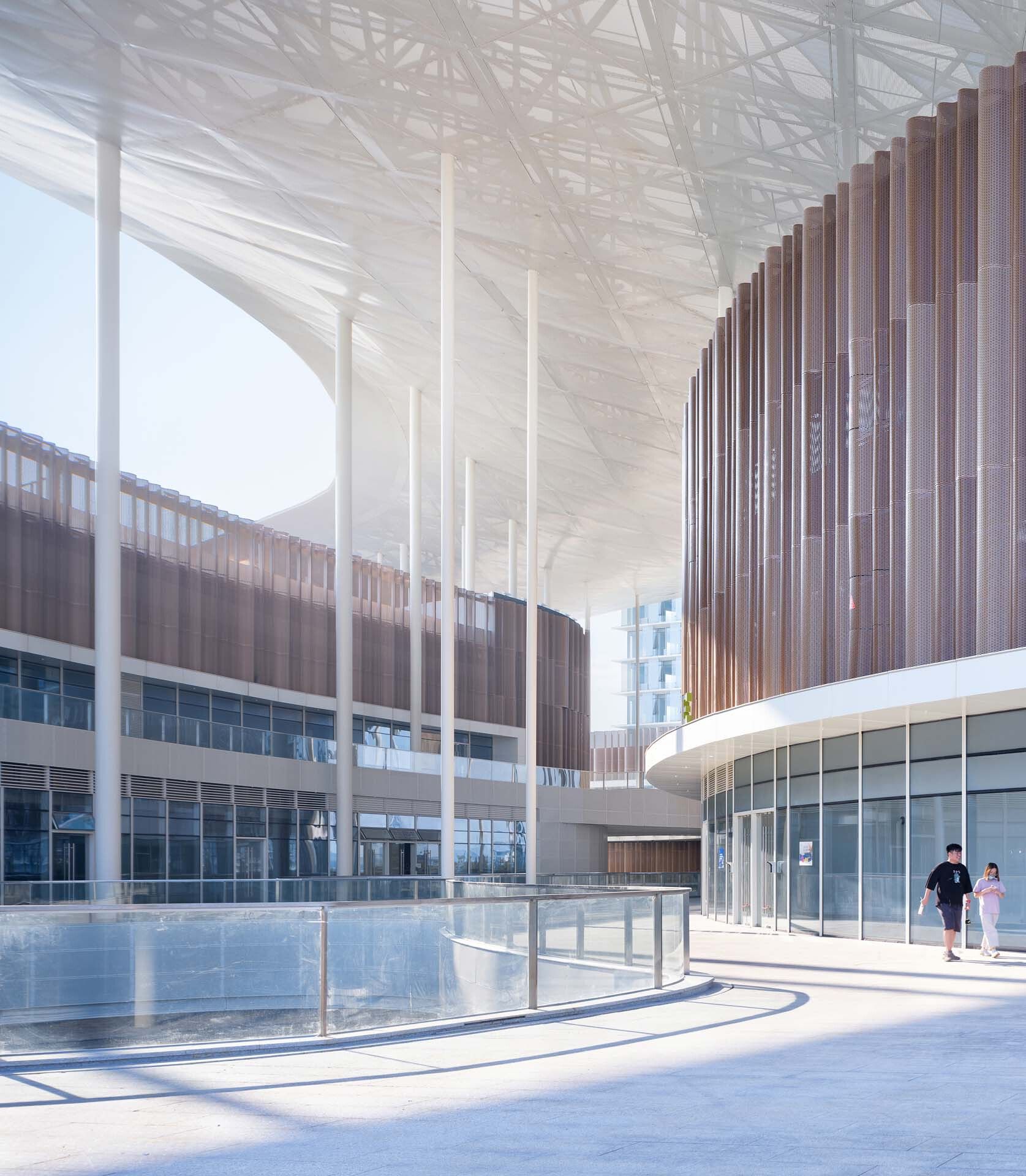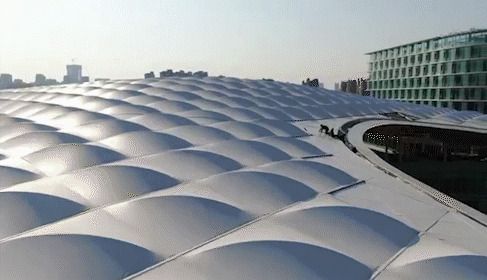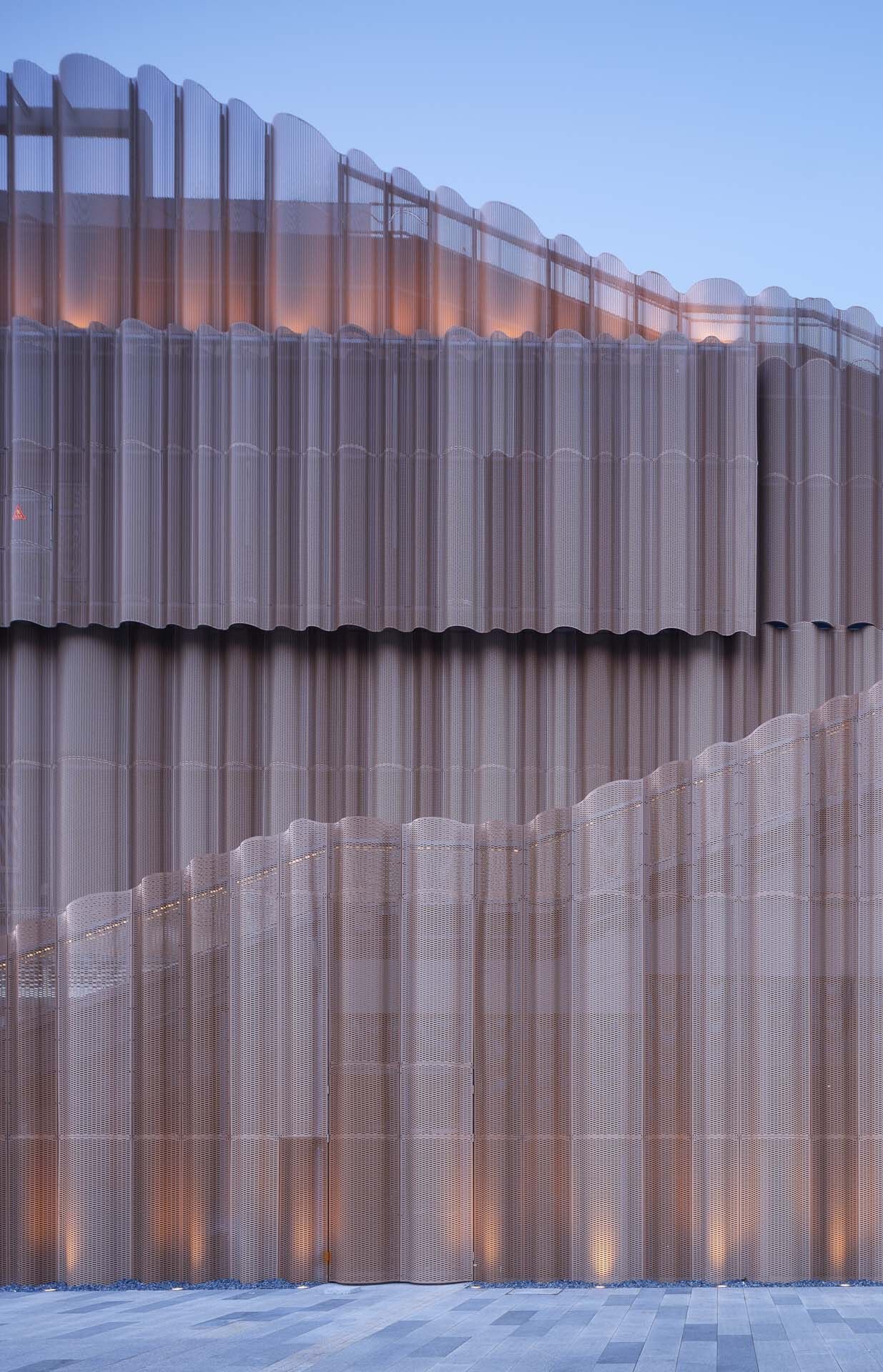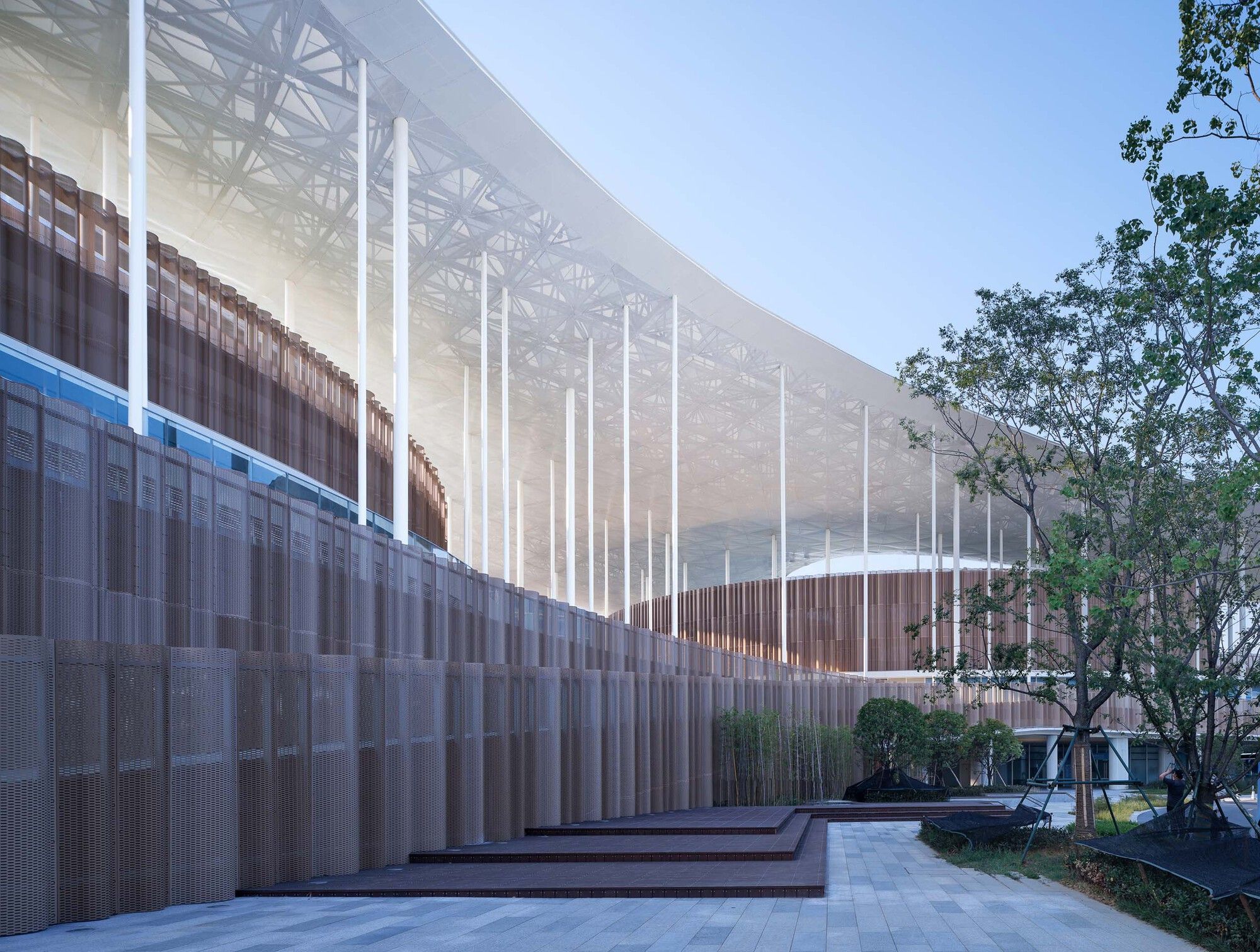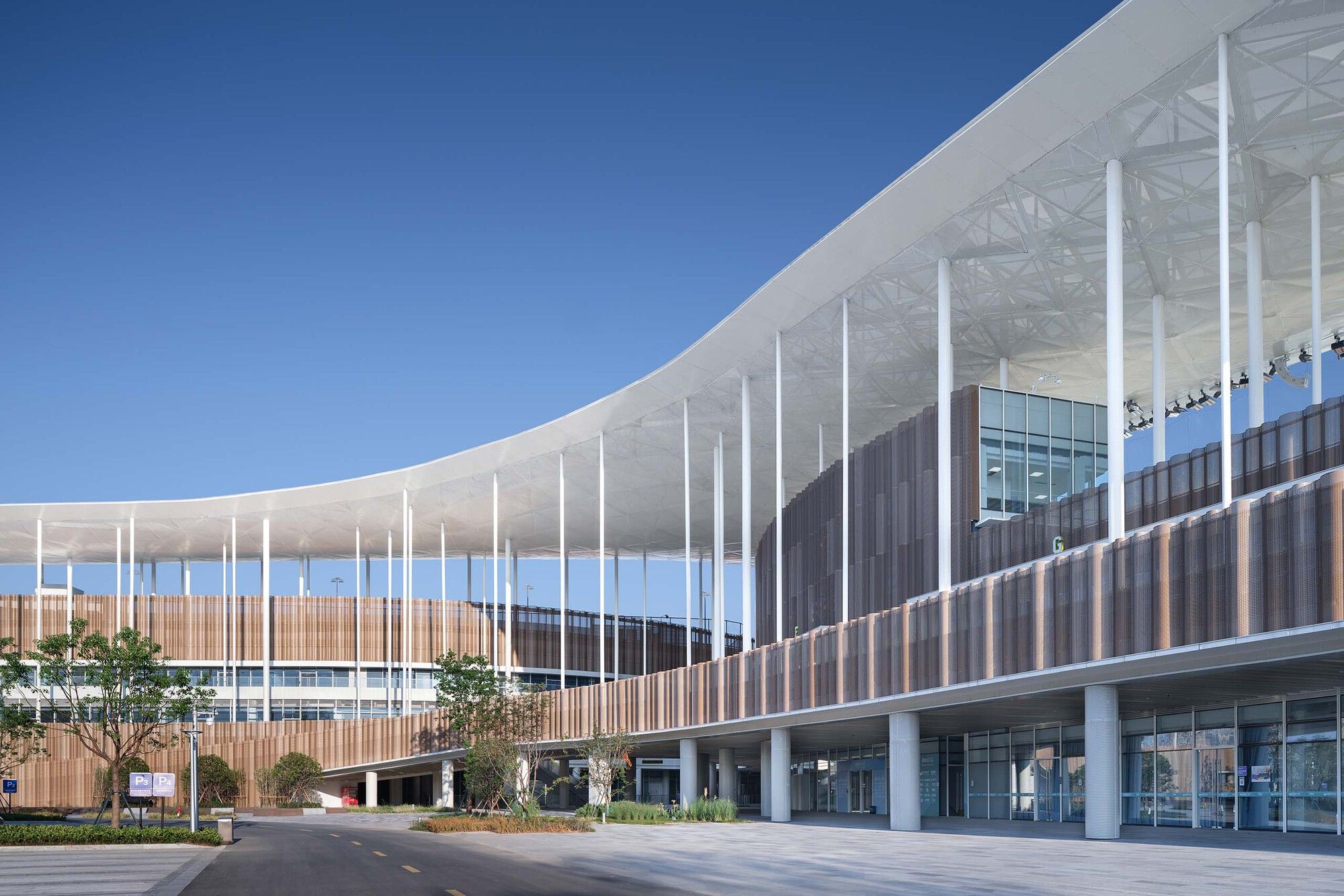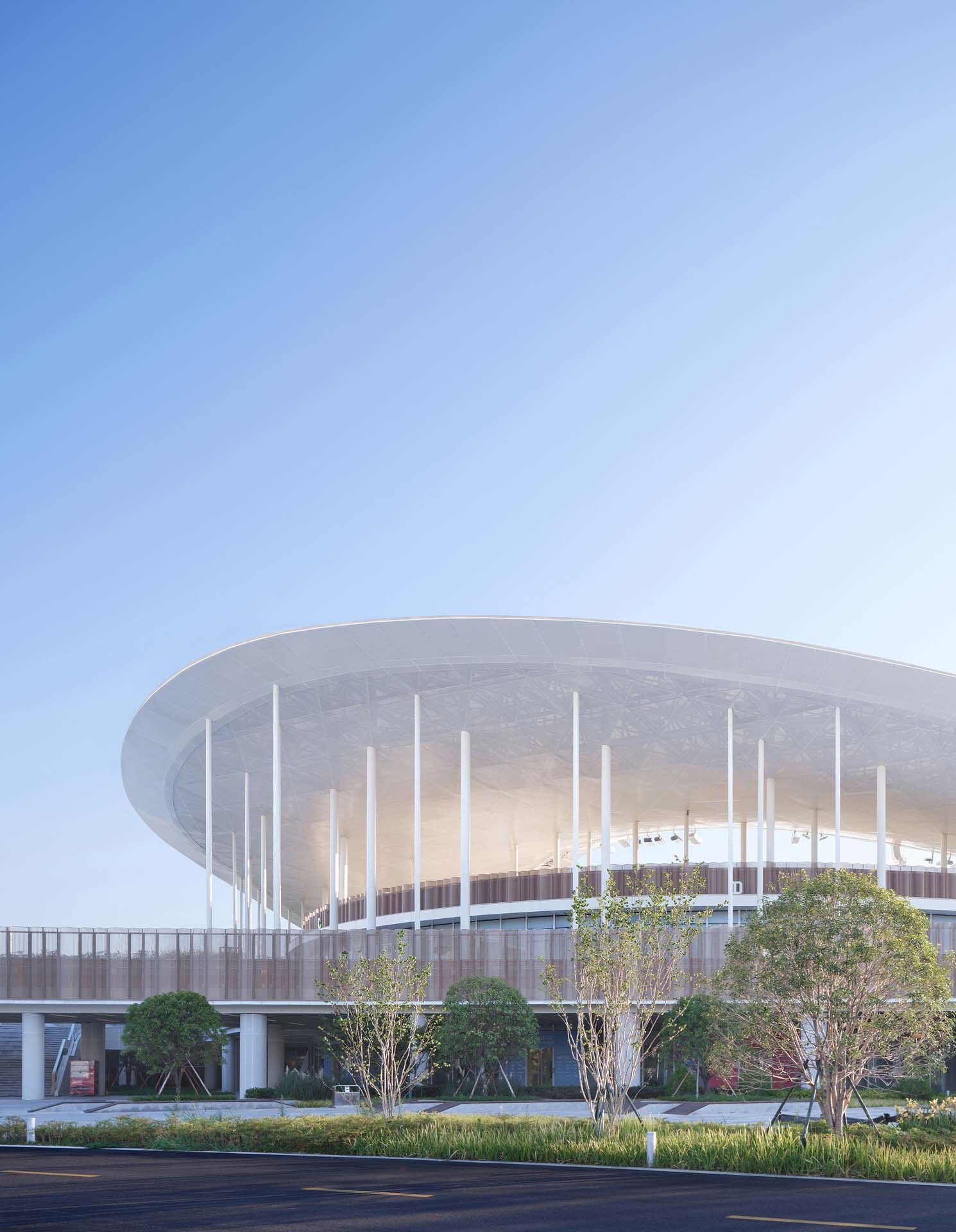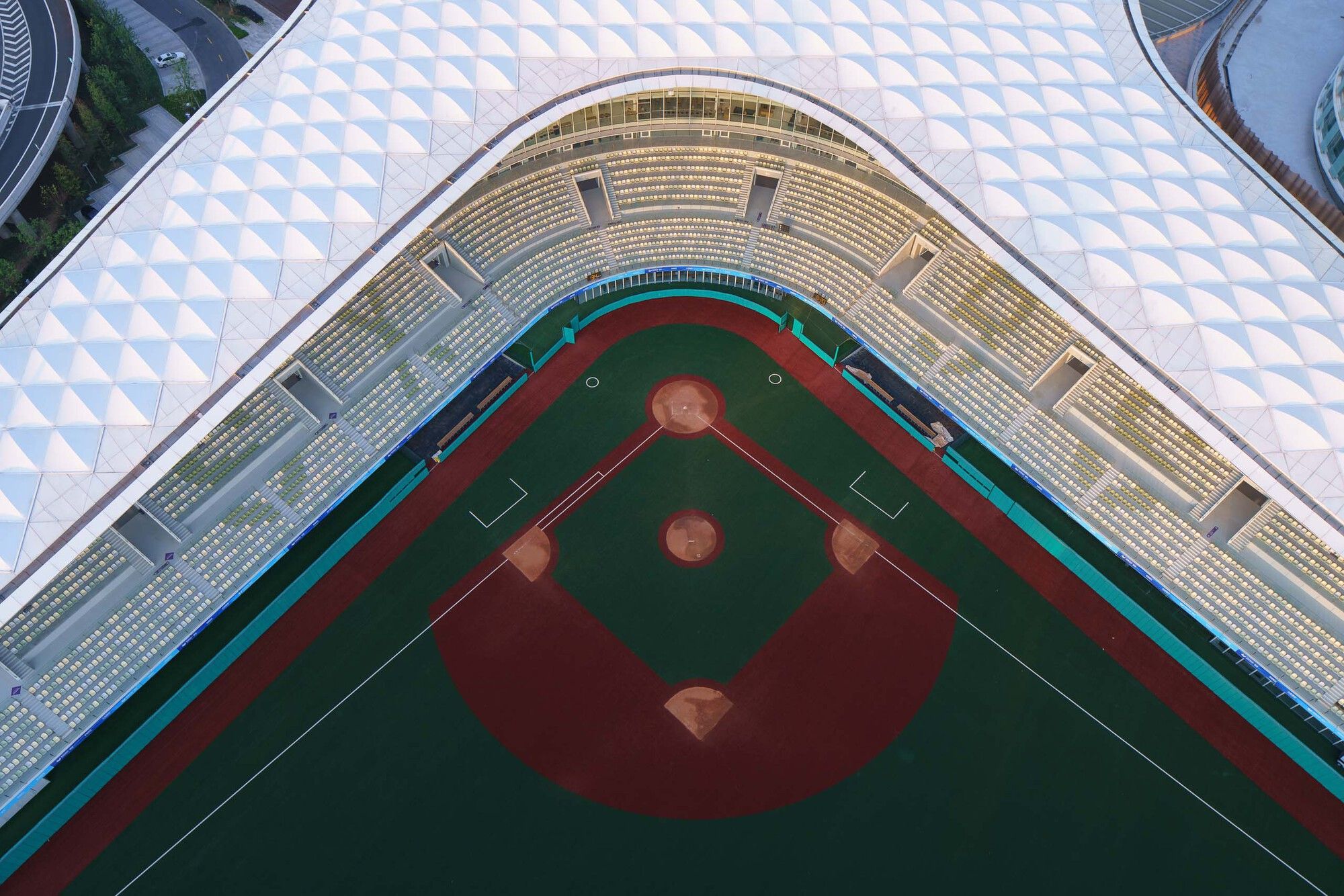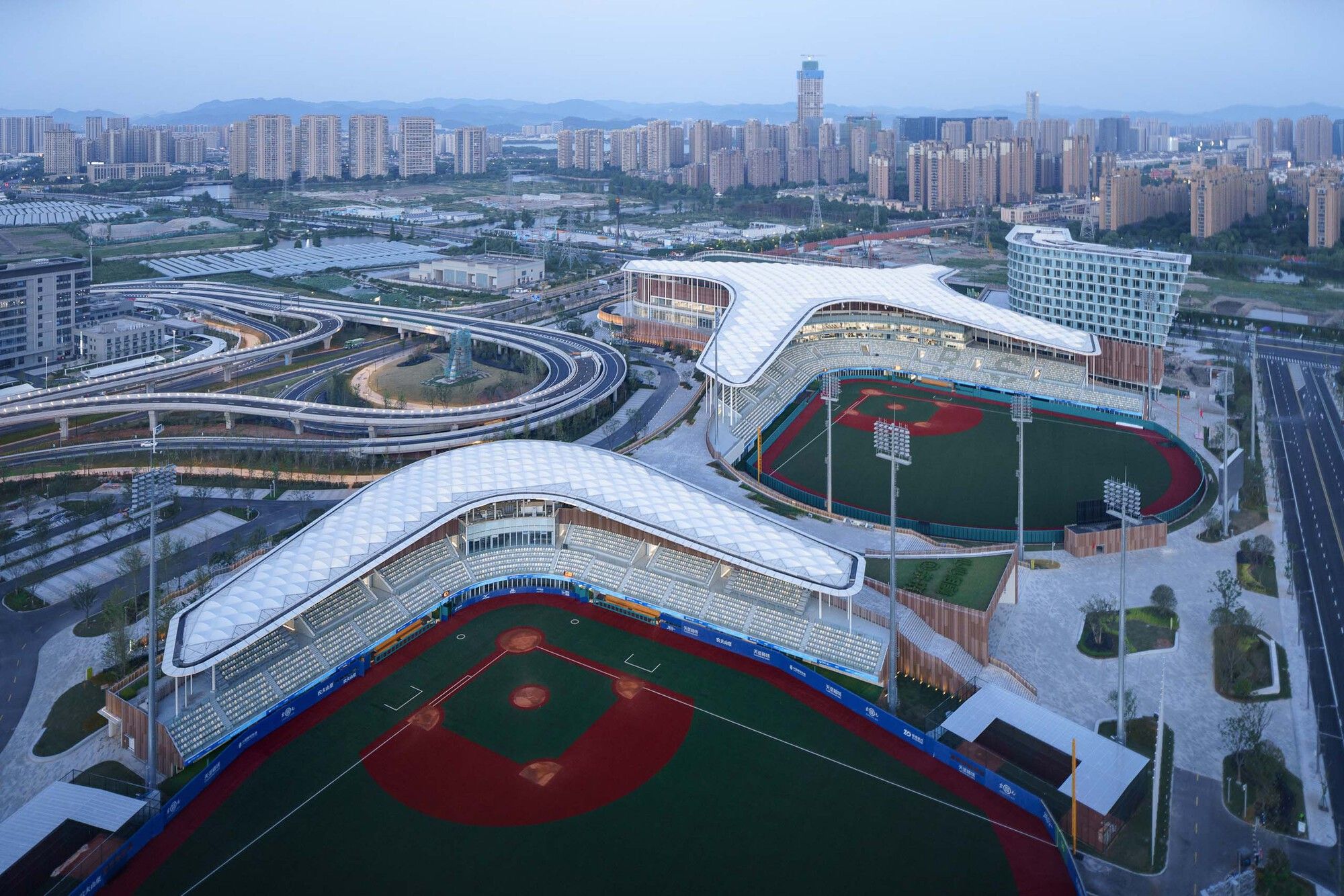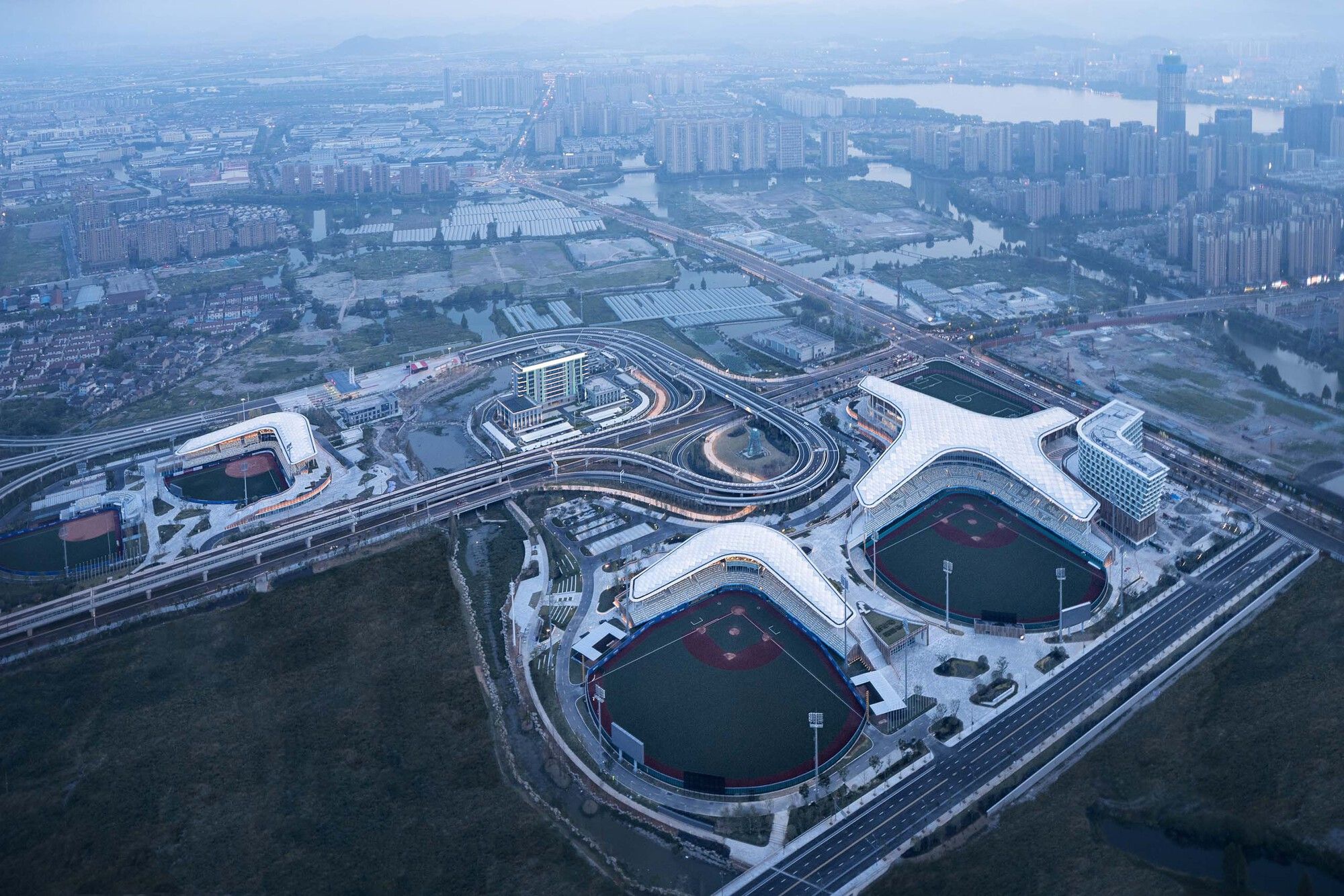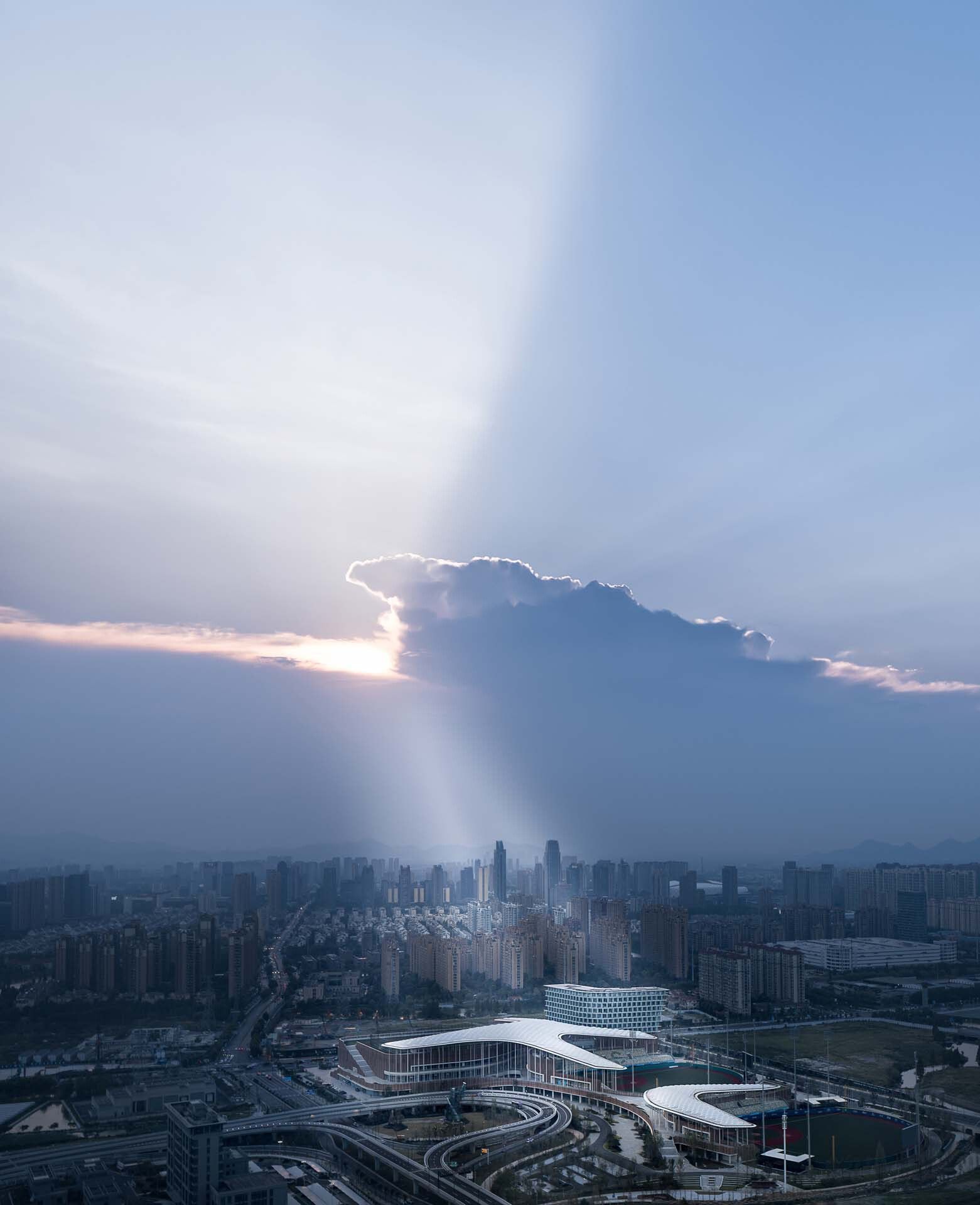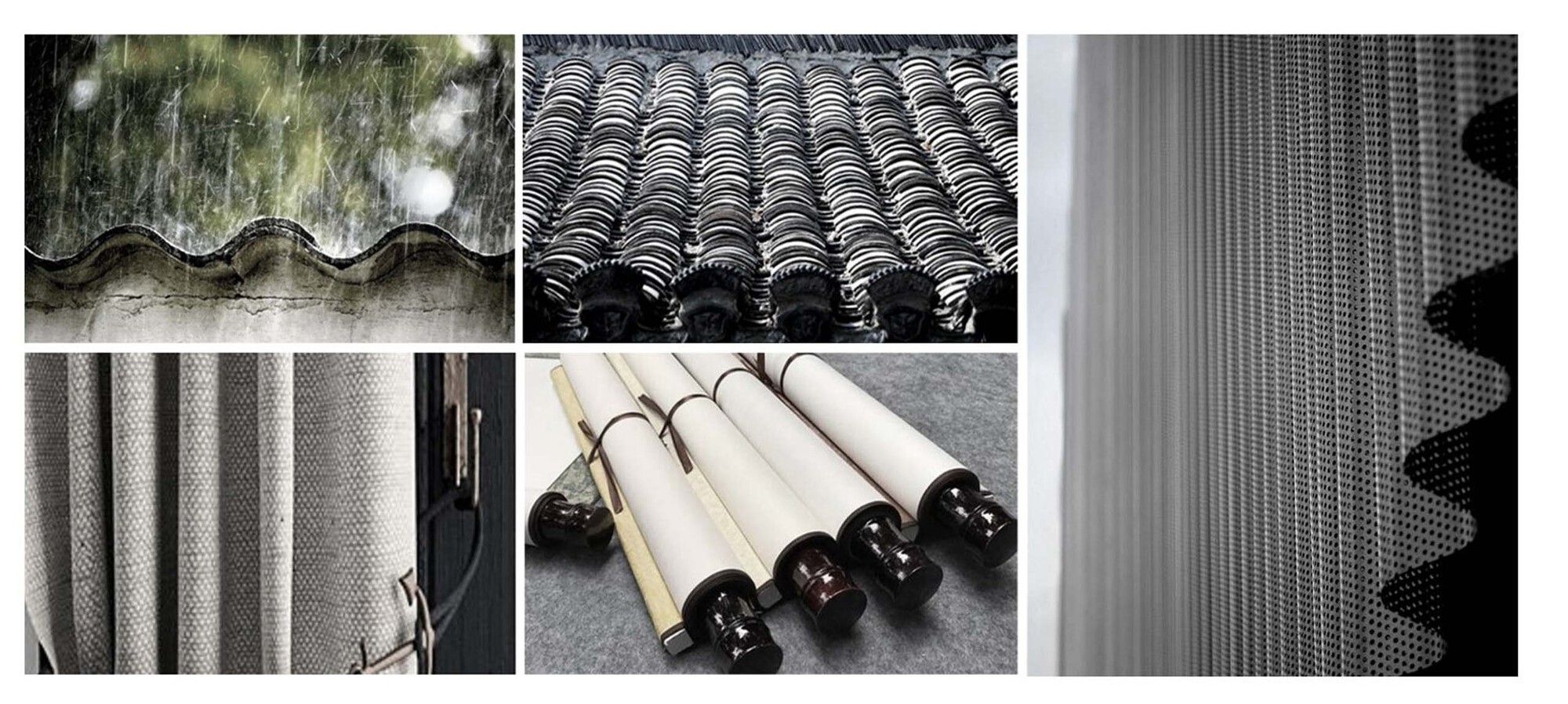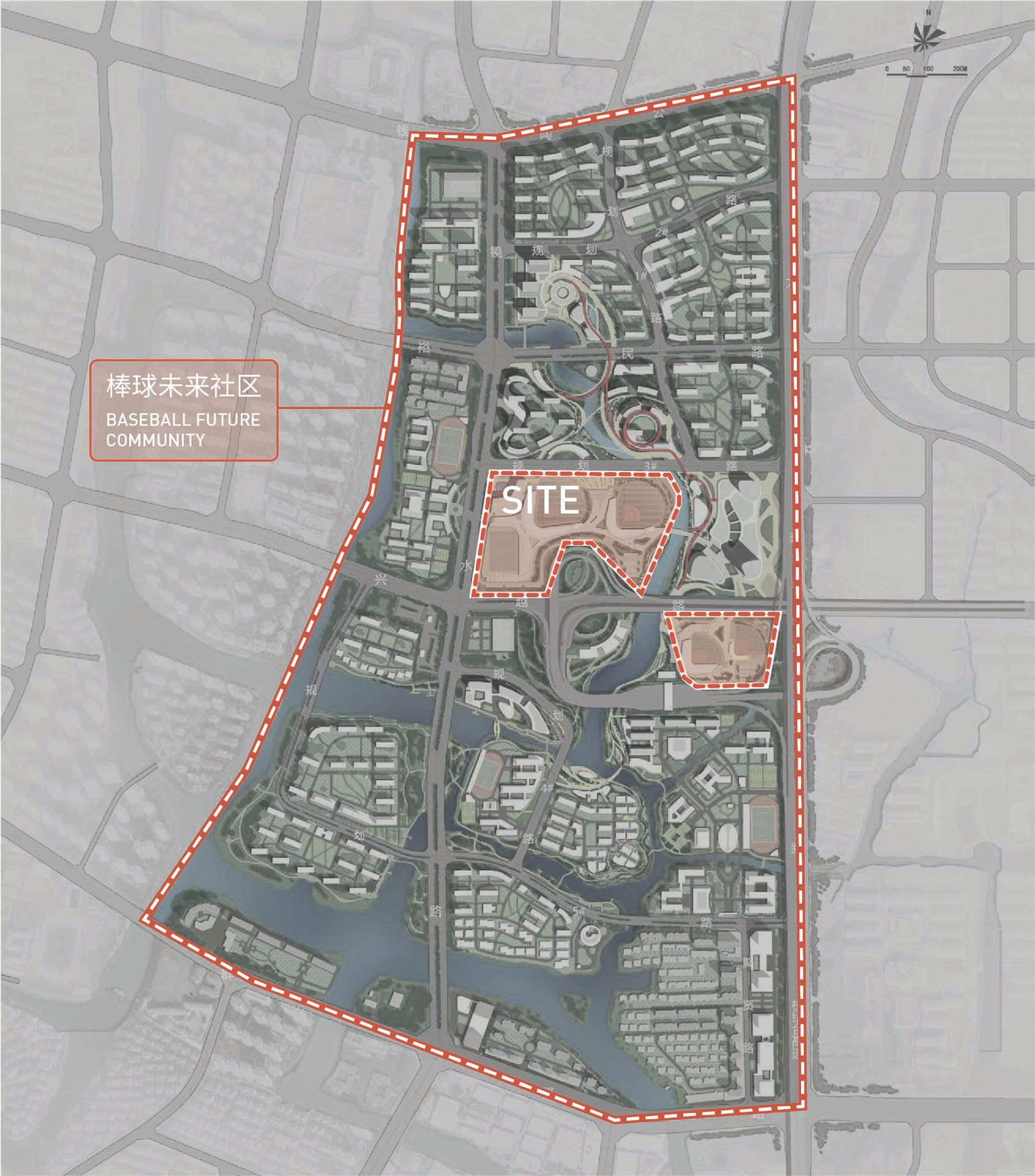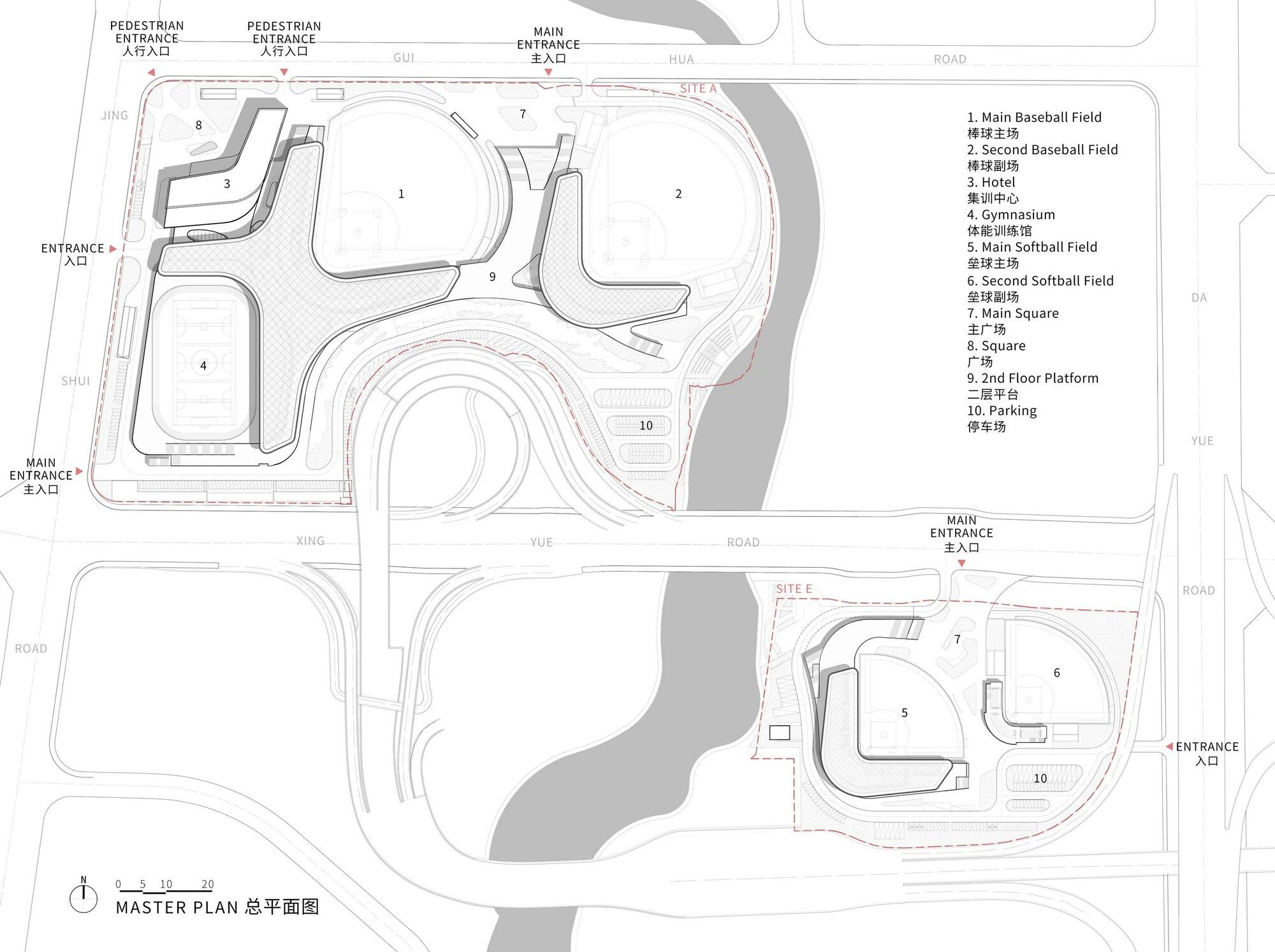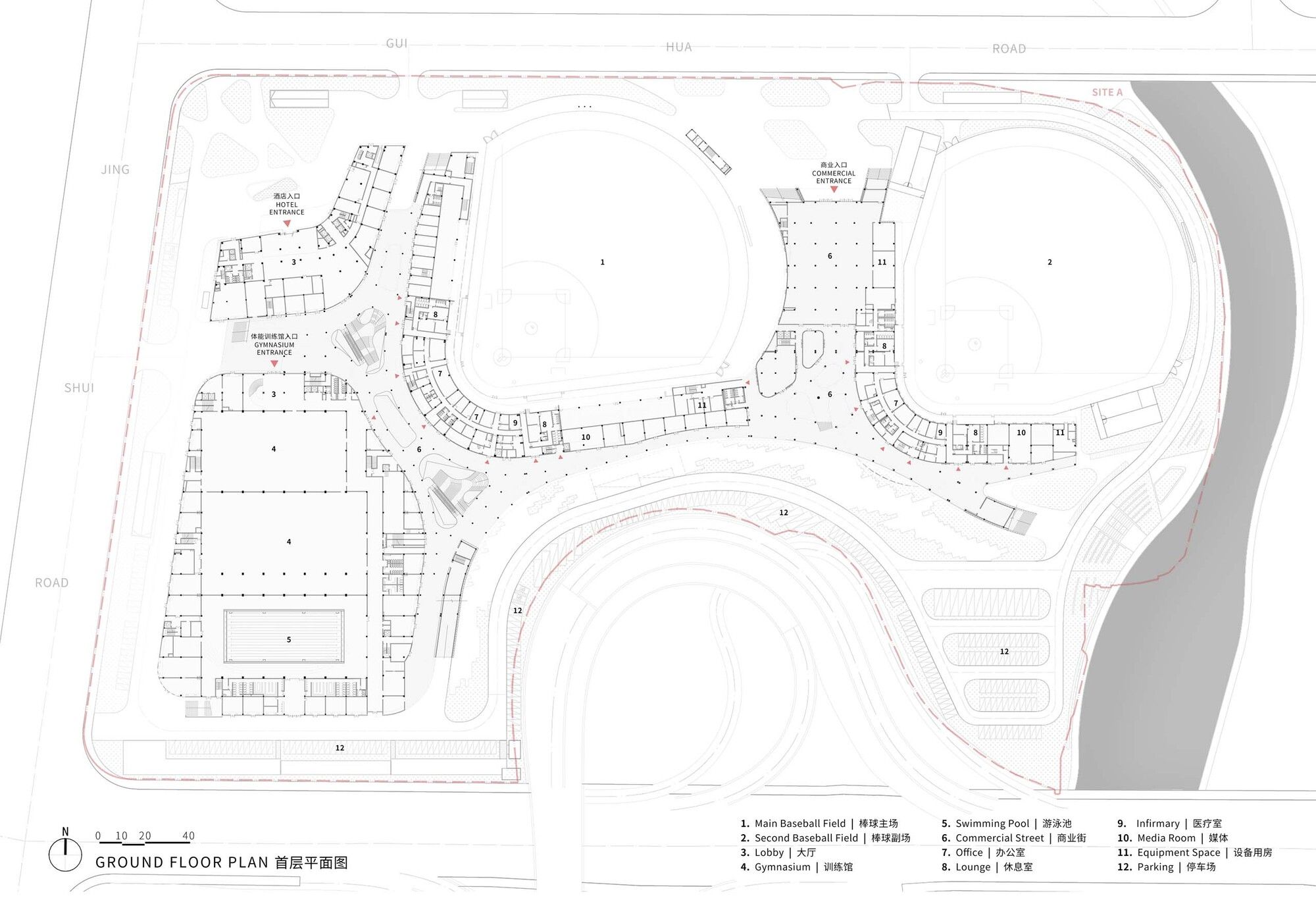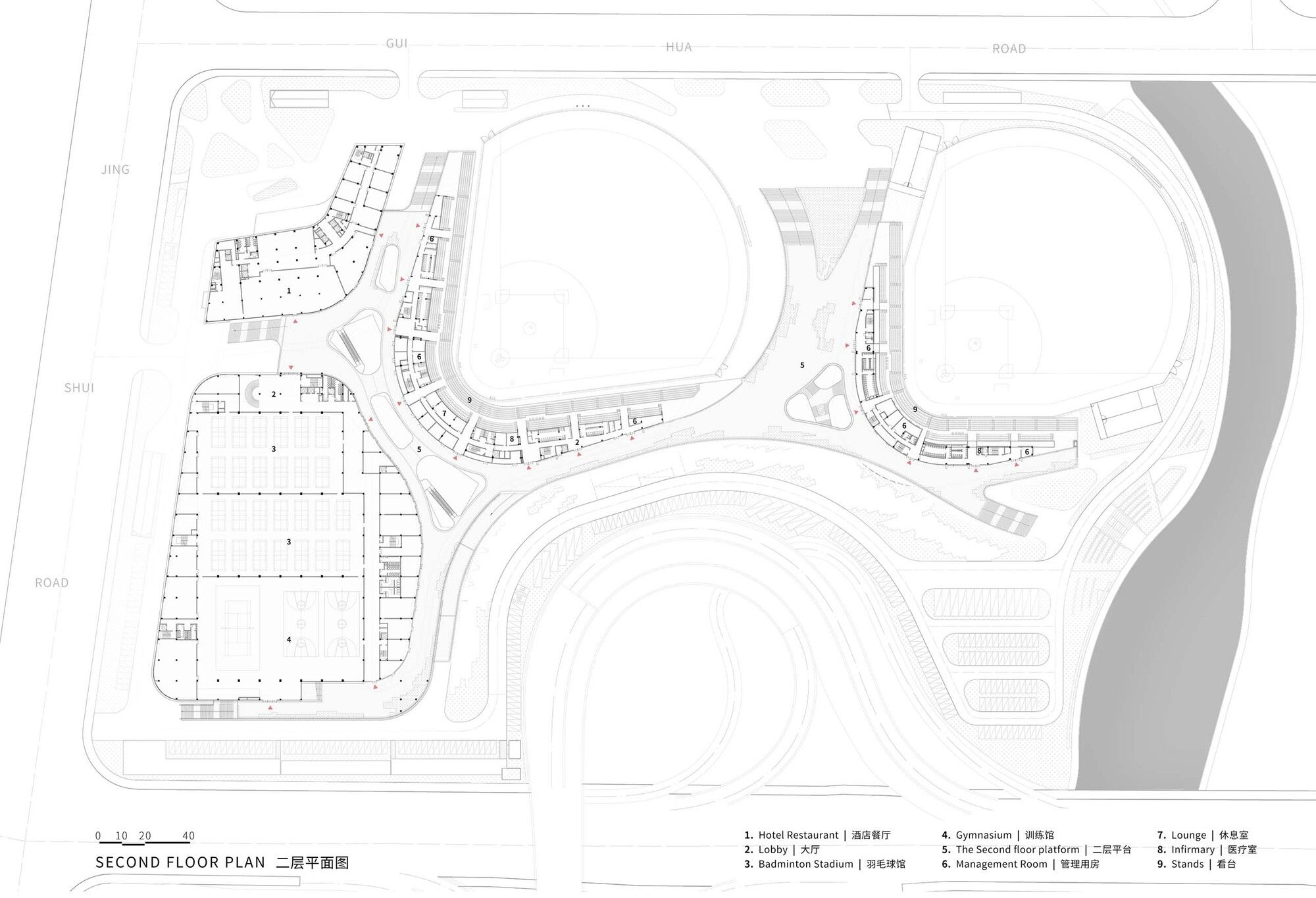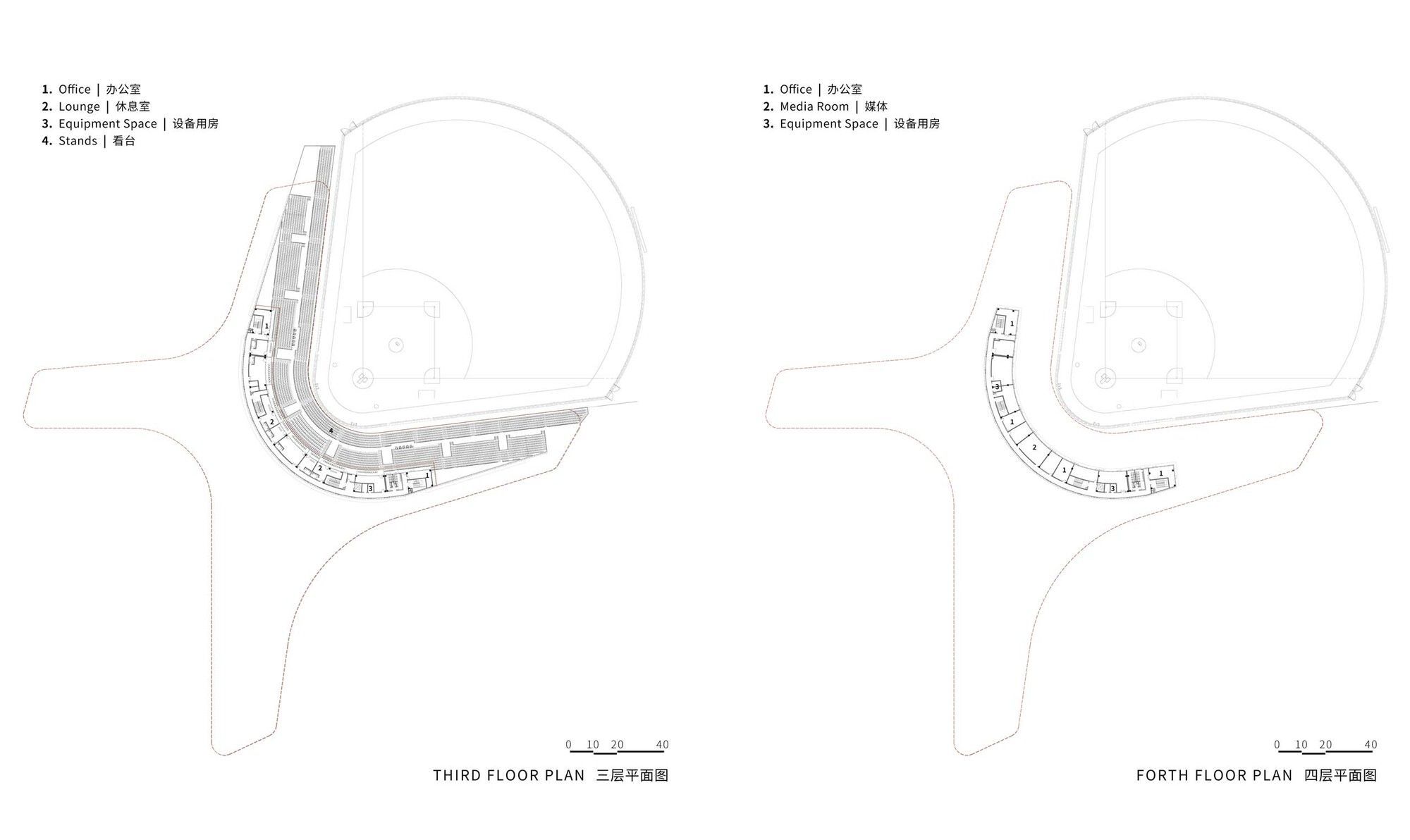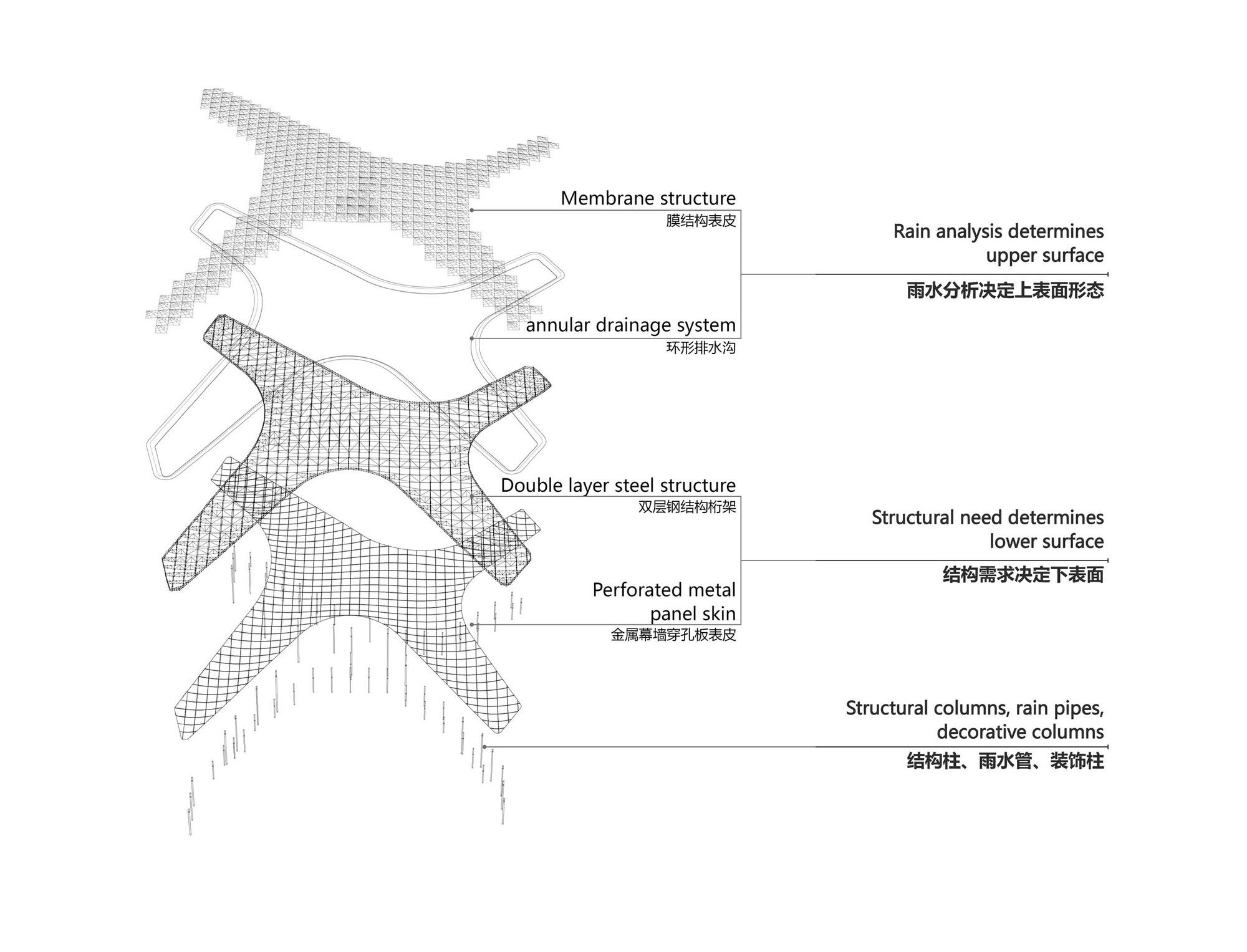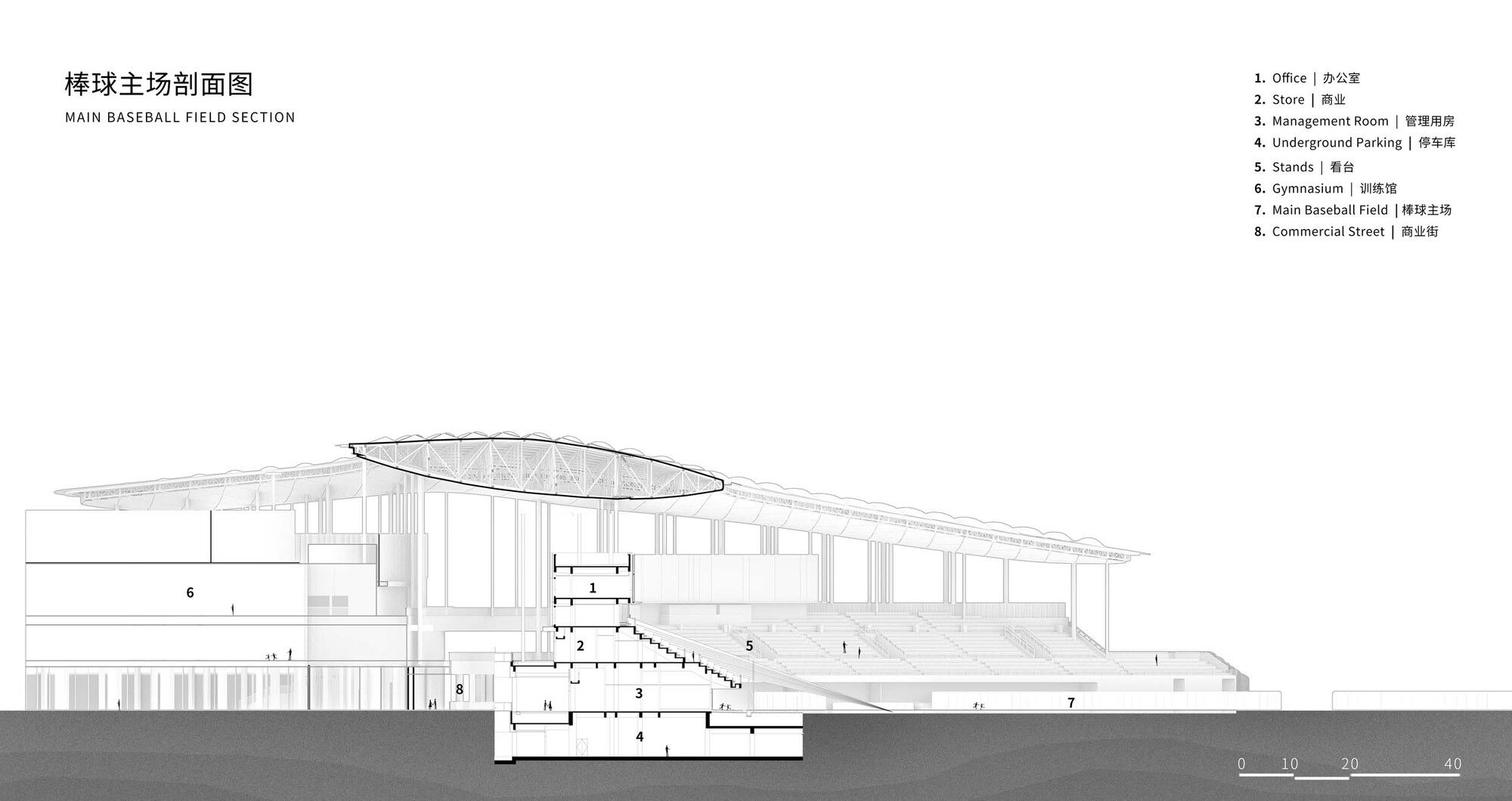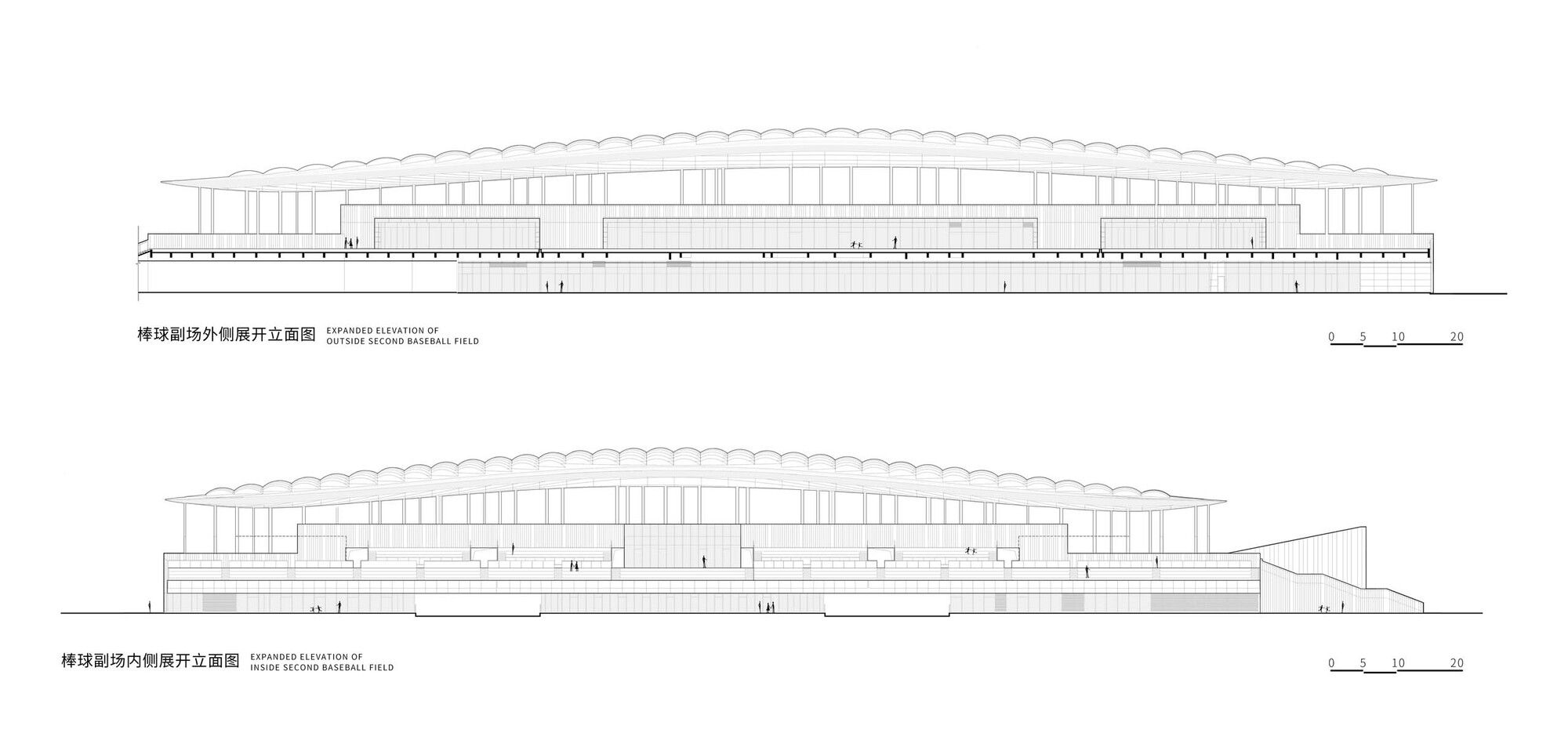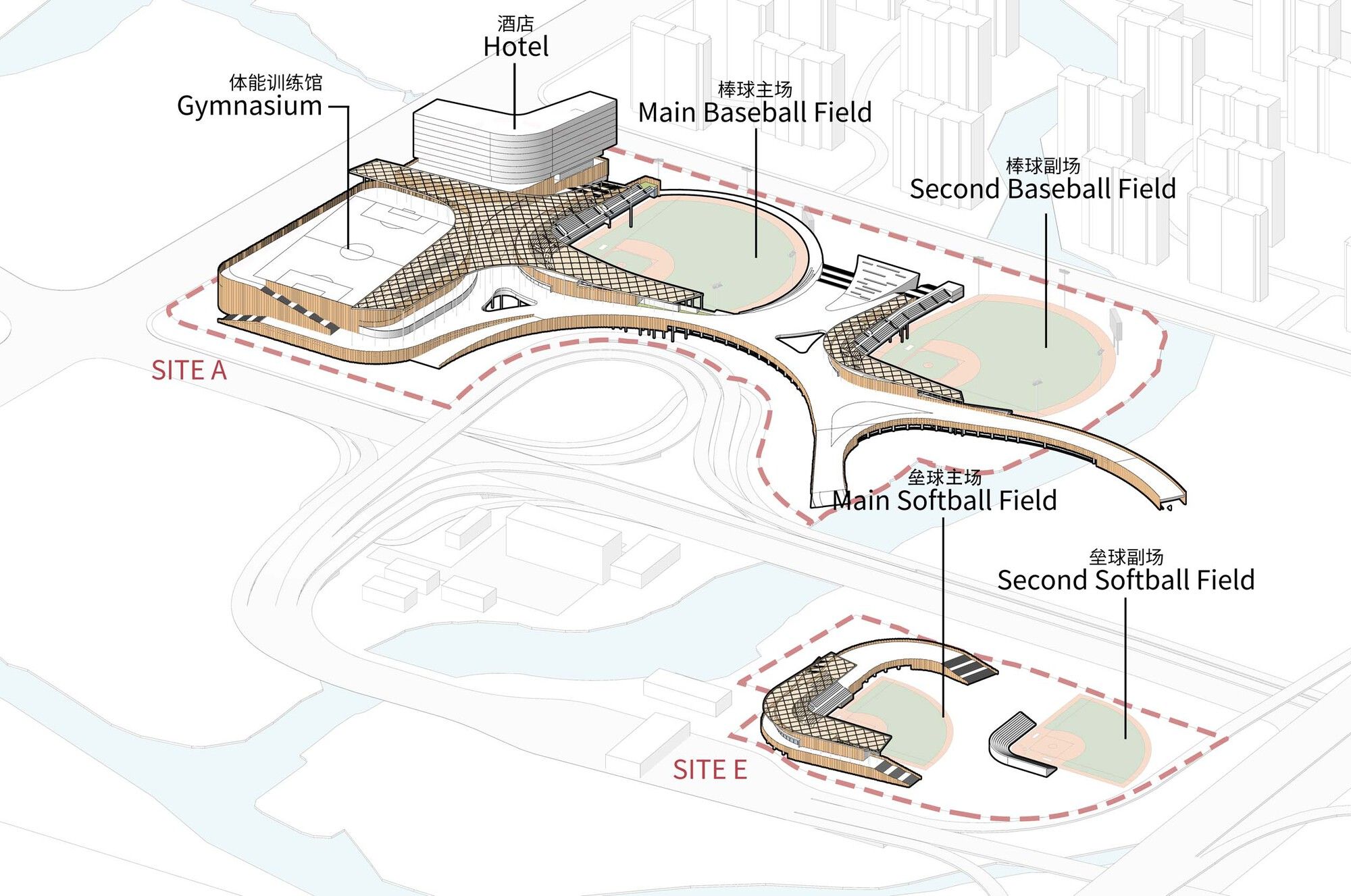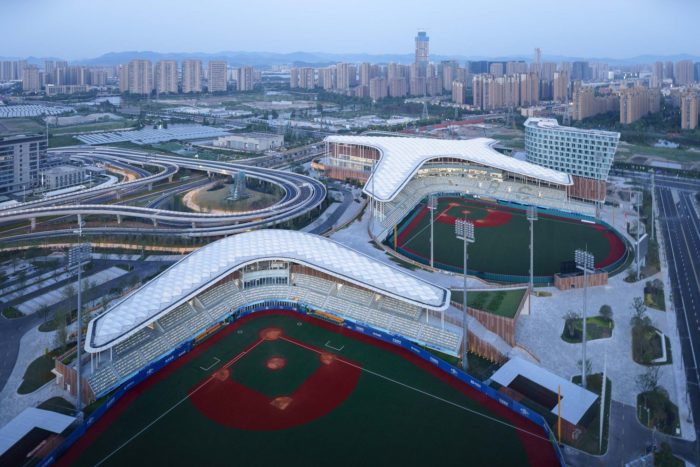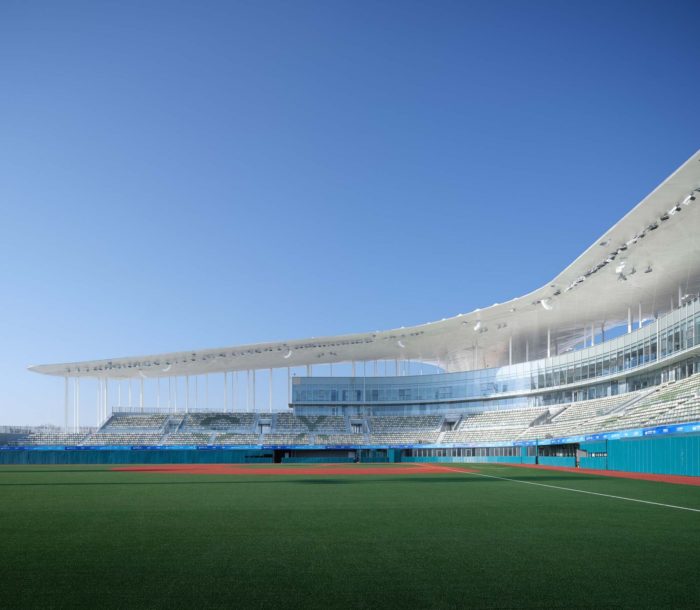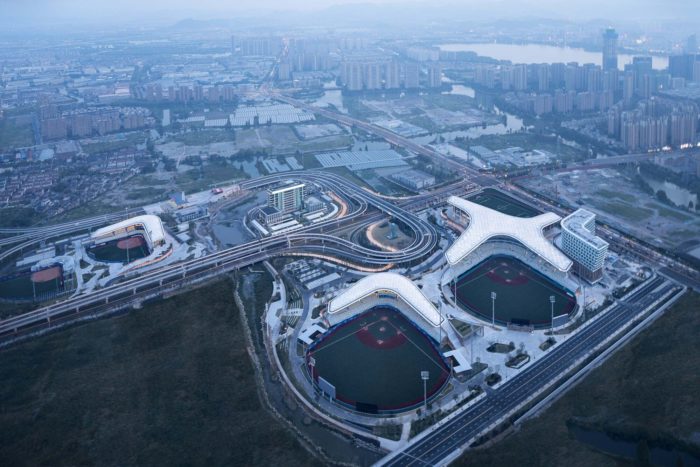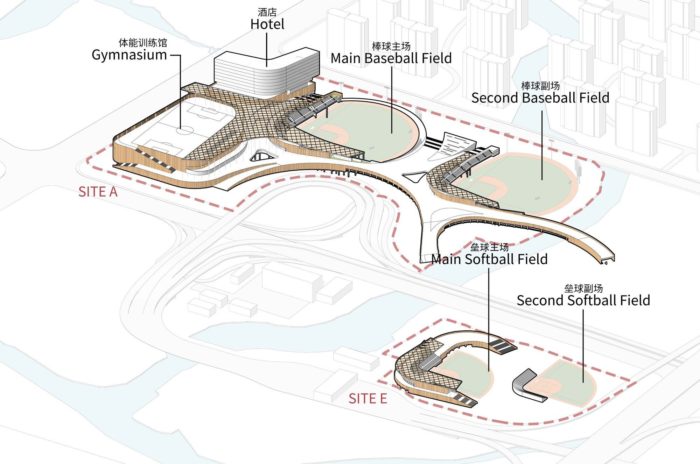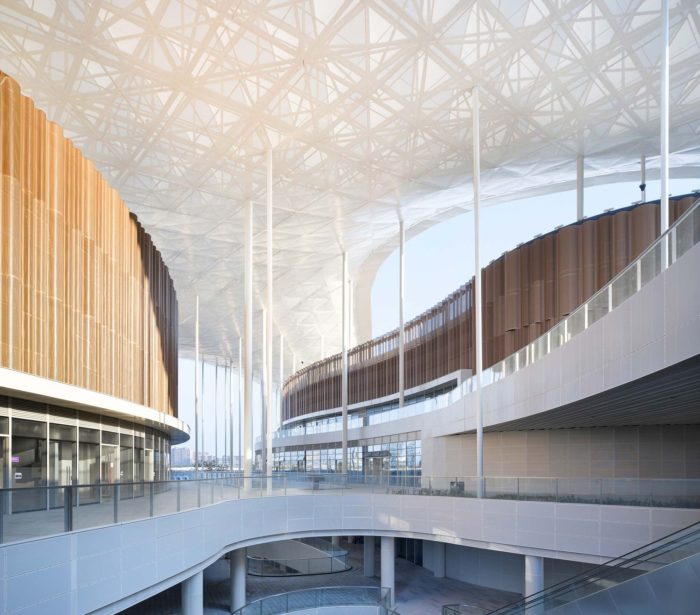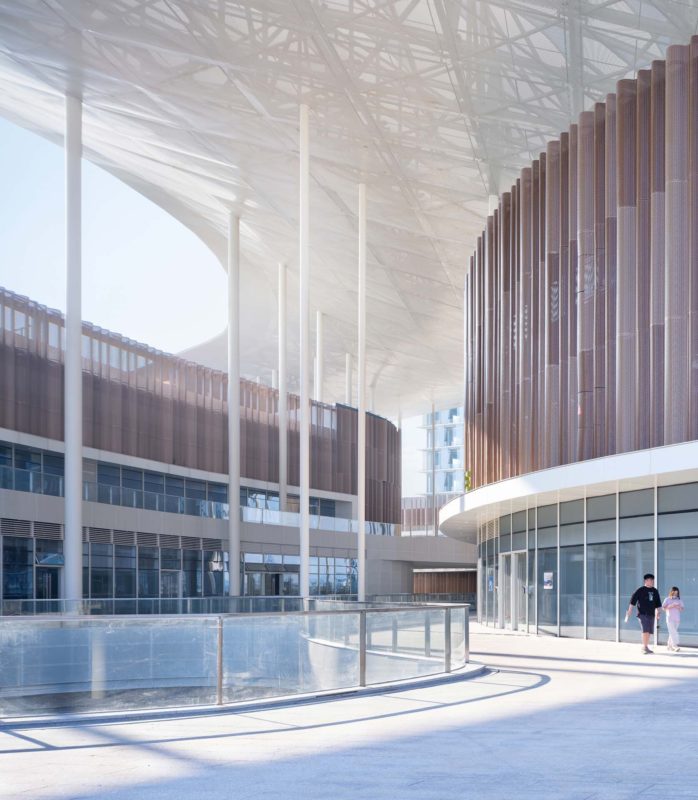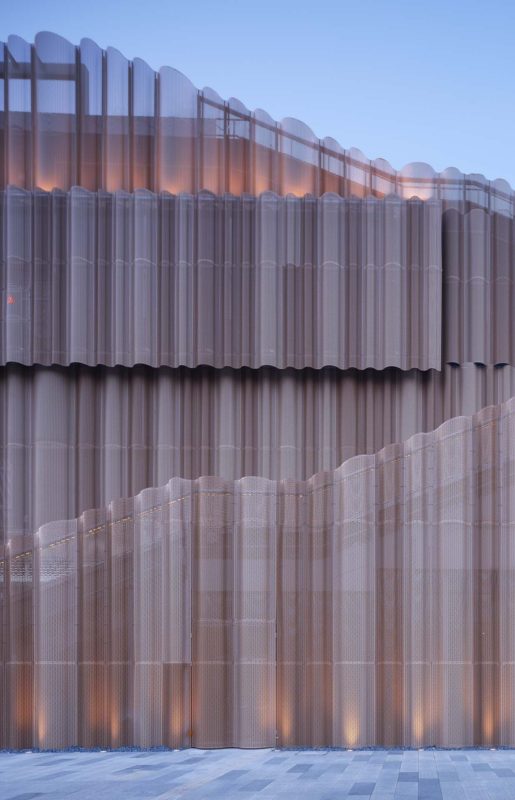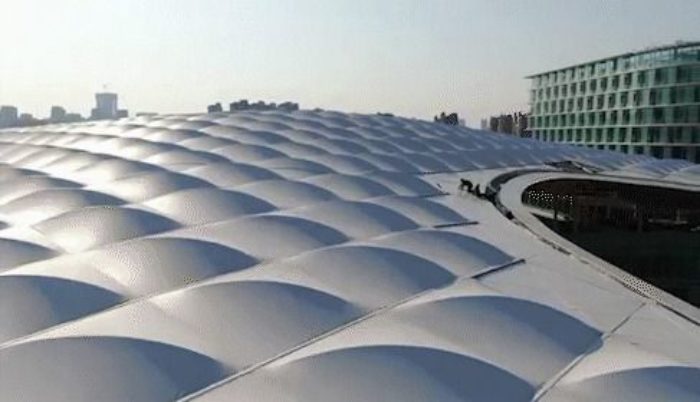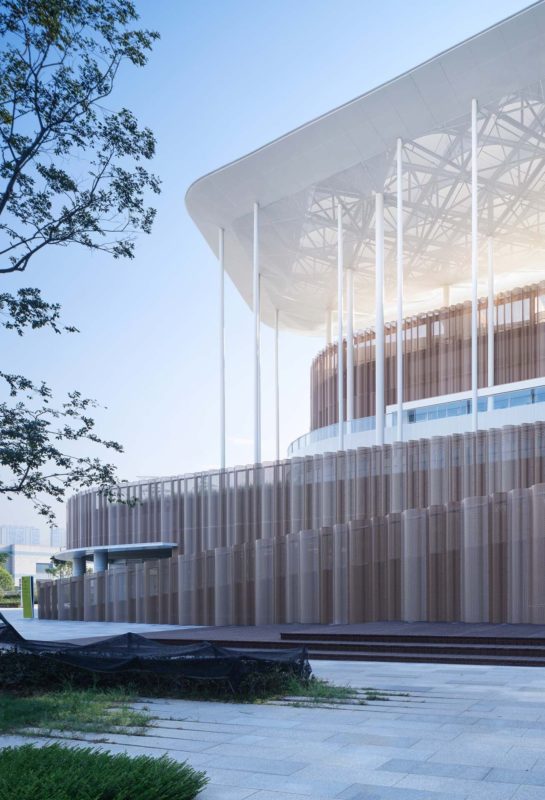The intrinsic nature of sports architecture prompts us to rethink how to organize its intrinsic relationship with the city. the Hangzhou Asian Games center we wanted to build a sports community driven by the stadium, which fully considers the multiple possibilities in the urban context and integrates them into urban life with a forward-looking perspective. At the same time, the concept of sharing and opening runs through the whole life cycle of the Hangzhou Asian Games, making it a link between culture and life, giving sports buildings unique public service value.– Qian Xidong
The 19th Asian Games will be held in 2023 in Hangzhou, China. Hangzhou Asian Games Baseball and Softball Sports and Culture Center, as the largest new venue of the Asian Games, is also the largest baseball and softball sports center with the highest standard and the most advanced facilities in China. It will inject new vitality into the surrounding communities and make sports become the background of the surrounding culture. We believe that sports buildings should not only focus on the function of sports competitions but also emphasize the flexibility of public services to adapt to the social trend of open sharing.
Hangzhou Asian Games Center’s Concept Design
It is an important feature of baseball and softball sports culture center different from traditional paradigm to construct sports community type sports culture complex and make it become the gravitation core of surrounding environment and region. Not limited to the traditional closed independent venues, the design hopes to break the relatively closed stereotype of sports buildings, fully consider the multiple possibilities in the urban context, and closely combine the sports culture complex composed of the baseball field, training center, and physical training hall with a characteristic commercial street with cloud wing roof, leading the public to be immersed in the shared and integrated future sports community atmosphere.
Park in the Future Community – Hangzhou Asian Games center located at the junction of Keqiao District and Jinghu New District in Shaoxing, this project serves as a vital hub in the planned baseball community. To foster a dynamic sports community, the design integrates various urban cultural functions, emphasizing culture, meticulous planning, and comprehensive utilization. It maximizes the public service aspect of sports facilities within the community. The project encompasses approximately 136,000 square meters, split into two sections, A and E. Plot A will feature baseball main and auxiliary fields, a fitness facility, and associated hotels, while plot E will host the main softball and auxiliary fields. This sports and cultural park is entirely open to the public, devoid of enclosing walls.
Whether it is a sports and cultural commercial street or a second-floor platform connecting various venues, the public can enter at any time and have a zero-distance experience. Considering the feasibility of the operation and management of the two stages during and after the Asian Games, the project cleverly opens the internal public space of the site and organically relates it to the surrounding future community, responding to the theme spirit of the Hangzhou Asian Games of “harmony between heart and heart, @ the future”.
Presentation of regional culture – “Inheriting history and reflecting regional cultural characteristics” is an important responsibility of the design of urban culture. The design draws inspiration from the artistic conception and textile culture of Shaoxing water town, showing a unique idea that fits the region. The venues are woven together through a ribbon of public platforms on the second floor and connected to the city streets as part of the street network. The architectural facade extracts curvilinear elements from traditional cultural symbols such as silk belts, scrolls, and tile roofs, and uses curved perforated aluminum plate material to create the image of Jiangnan with continuous waves. The perforated patterns in different proportions and forms of the perforated aluminum plate give the facade a unique technical rhythm, a continuation of the traditional textile craftsmen’s poetry, and arouse the public’s memory of regional culture.
Post-competition utilization – The project comprehensively considered the feasibility of the operation and maintenance management during and after the Asian Games, cleverly connecting the internal public space of the site with the surrounding community organically. At the same time, the design pays attention to the integration of architecture and the natural environment, the space function is highly changeable and adapts to local conditions to provide convenience for the sports culture community.
Besides baseball fields and softball fields, Baseball and Softball Sports Culture Center is also equipped with hotels, a national fitness center, and a large number of commercial service spaces, which can meet the diversified operation needs after the Asian Games and become an important supporting service center in the future community. With sports service as the fulcrum, drive the development of the whole area and enhance the popularity of the community.
Floating CEILING – The huge ceiling above the venue is the key and difficult point of this design. We use a bidirectional truss system with a maximum cantilever of 16 meters, supported by slender steel columns. The top surface is covered with PTFE film coated with titanium dioxide, covering a total area of 21,000 square meters. Each unit rises slightly in the middle, looking from a distance like the ripples created by the breeze blowing across the water, a metaphor for the regional characteristics of Shaoxing water town. The underside of the ceiling is covered with curved white perforated aluminum panels. The skylight diffuses through the ceiling to create a rich layer of light and shadow. The translucent visual effect eliminates the oppressive feeling of the massive volume, making the blurred boundary with the sky more hazy and light. The slender white structural columns look like skylights through the clouds, creating a sense of lightness and breathing.
At night, in the rich LED lighting, the ceiling is bright and transparent, providing a unique spectator experience during the game. The surface curvature of the awning is calculated through the simulation of rain and sunshine, which determines the form prototype of high middle and low circle, so as to achieve the best drainage and shading effect. The thickest of the slender steel columns are structural columns, and the rest are drainage tubes, cable tubes, and decorative columns. Different pipe diameters represent the different functions undertaken by them. The space atmosphere is clean and pure, and dense as if shuttling through the bamboo forest. Viewed from a distance, the entire awning seems to float above the venue, but also like a white cloud wing, overshadowing the entire venue.
Summary – Whether for athletes of the Asian Games or ordinary residents, we can see the new sports architecture concept from the baseball and softball sports cultural center of the Hangzhou Asian Games: the composite service function, the virtuous circle system with the outside city, and the space phenomenon gathered in it. From the perspective of the sports community, the project will integrate it into the city and build on the longitude and latitude of the city, community, and cultural factors. The “WINGS OF CLOUD” is waiting to perch on the water town, anchoring the natural connection between the site and the city, and eliminating the gap between them, so a dynamic sports community emerges.
Project Info:
Architects: UAD
Area: 160139 m²
Year: 2022
Photographs: Qiang Zhao
Lead Architect: Xidong Qian
Architectural Design: Kejie Huang, Shanfeng Ye, Chengyuan Zhu, Yilin Zheng, Mengyun Zhang, Chenglin Mao, Zhenghe Sun, Jingjing Wu, Erya Zhu
Head Of Design: Danshen Dong, Xidong Qian
Project Leader: Jiawei Zhou, Kejie Huang, Haitao Yu
Structural Design: Zhibin Xiao, Qiguang Fan, Handong Shen, Jianli Li, Jiapeng Guo, Peiwei Chen
Water Supply And Drainage Design: Jiasong Yi, Peiju Liu, Zhenyu Zhang, Zehang Zhang
Hvac Design: Yi Yang, Kai Yi, Guangyu Lu, Yunzhou Huang, Yanqiu Yan, Lu Liu
Electrical Design: Ping Li, Baile Feng, Qiang Zhang, Linyan Zhang, Bin Wang, Zhouning Deng, Bokai Hou
Geotechnical Design: Quanbiao Xu, Kai Zeng, Shengxian Chen, Haonan Xu
Smart Design: Gaojun Ni, Jian Ma
Interior Design: Dan Li, Weier Xu, Lijun Wang, Heng Zhang, Zhenwei Zhang, Wenjia Lyu
Curtain Design: Qi’an Bai, Chun Xiang, Qianyang Jiang, Nan Zhang, Pengfei Zhang, Dongqiu Cao
Sports Craft Design: Beijing Huati Chuangyan Engineering Design Consulting Co., Ltd.
Landscape Design: Shangchen Engineering Design Group Co., Ltd.
Floodlighting Design: Hangzhou Blue-sky Gardening Construction Group Co., Ltd.
Logo Design: Hangzhou Durian Brand Planning Co., Ltd.
Construction: Zhejiang Jinggong Steel Building Group Co.,Ltd.
Client: Shaoxing Baseball and Softball Stadium Construction and Operation Co., Ltd.
City: Shaoxing
Country: China
